Ngorongoro Crater, Serengeti National Park, Chyulu Hills National Park,
Maasai Mara Game Reserve
For those who have followed our earlier adventures, you may recall we had originally planned to visit East Africa for our third trip, but due to various circumstances, we postponed it. Well, the time had finally come, and we booked this trip in April 2020—yes, right when the world was effectively shut down. It was a strange time to plan, but we were hopeful for the future, and we’re so glad we took the leap!
The trip was scheduled to begin on November 1, which was just after the end of peak season, allowing us to take advantage of some great discounts. Initially, we thought we’d visit 3 or 4 lodges, but as we began to refine the itinerary, it grew to 6 lodges spanning both Kenya and Tanzania, with a total of 8 flights over the course of 16 nights. The final trip duration was about 3 weeks, and it turned out to be a truly unforgettable adventure.
So, let’s dive into the details and share our experiences with you. We hope you enjoy following along on this exciting journey!
Nairobi
Nairobi, home to Nairobi National Park and iconic tourist spots like Giraffe Manor and the Karen Blixen Museum, offers a mix of wildlife, history, and local culture. From the Sheldrick Wildlife Trust to vibrant shopping hubs and delicious eateries, Nairobi has something for everyone. It’s also the perfect base for exploring the rest of Kenya, from safari adventures to the coastal beauty near Mombasa.
During our time in Nairobi, we immersed ourselves in nostalgia, reconnecting with the places that shaped Pranav’s childhood. We spent three unforgettable days revisiting his childhood home, primary school, and meeting old friends. It was an emotional journey, walking through familiar streets, revisiting cherished spots, and witnessing the city’s transformation — though many places still felt just as they once did.
On our next visit to Kenya, we plan to revisit these nostalgic sites, as well as explore Nairobi National Park and other must-see tourist destinations.
Hemingways
We worked with our travel agent (TA) to arrange the safari portion of our trip, but for the flights, Hemingways Hotel, and sightseeing around Nairobi, we took care of the bookings ourselves. We decided on staying at Hemingways in Karen (a well-known hotel) because of its proximity to Wilson Airport, which was convenient for the numerous flights and transfers we would be taking throughout our trip.
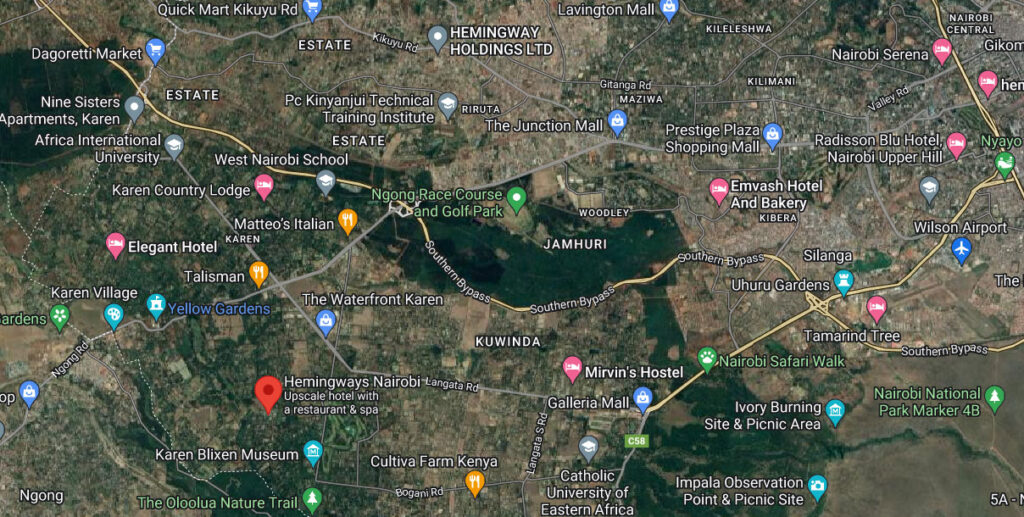
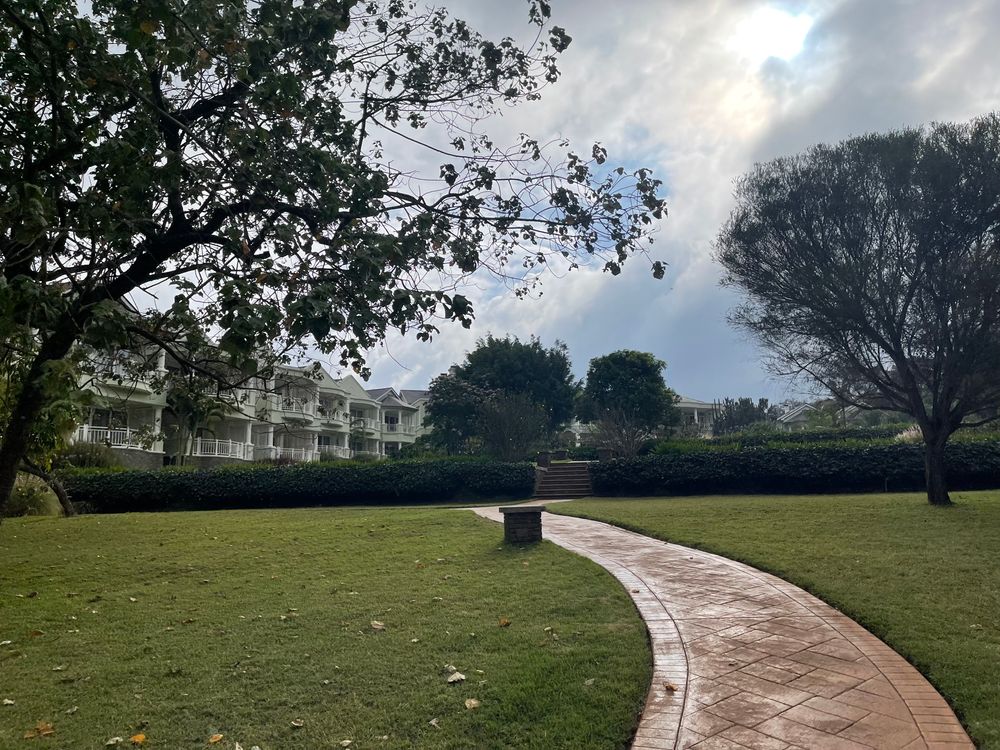
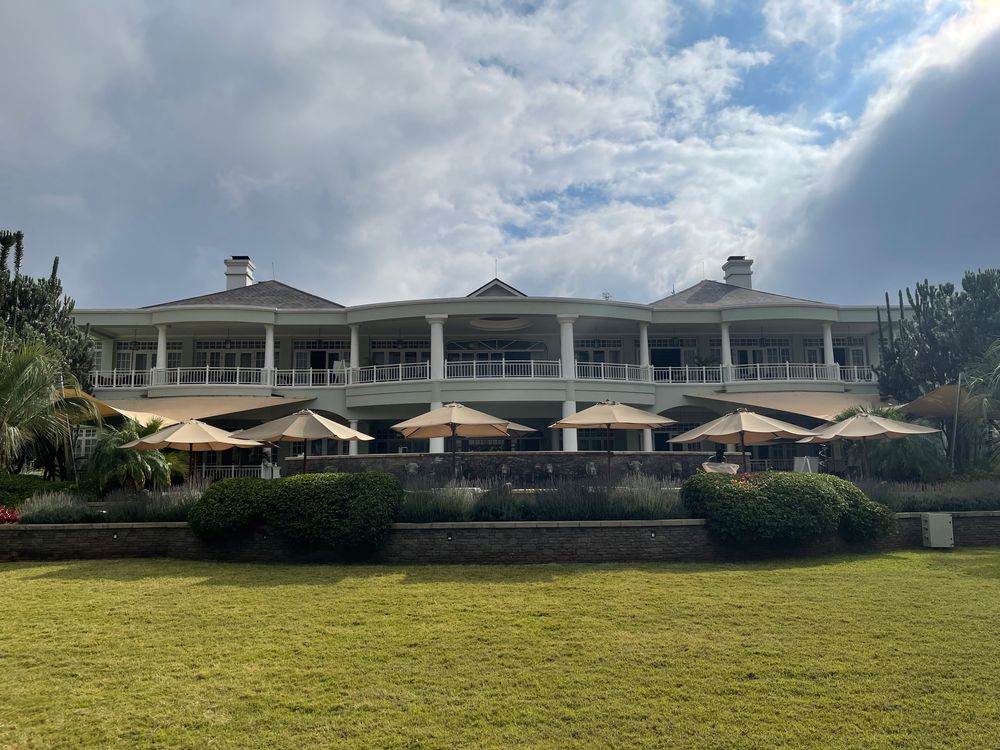
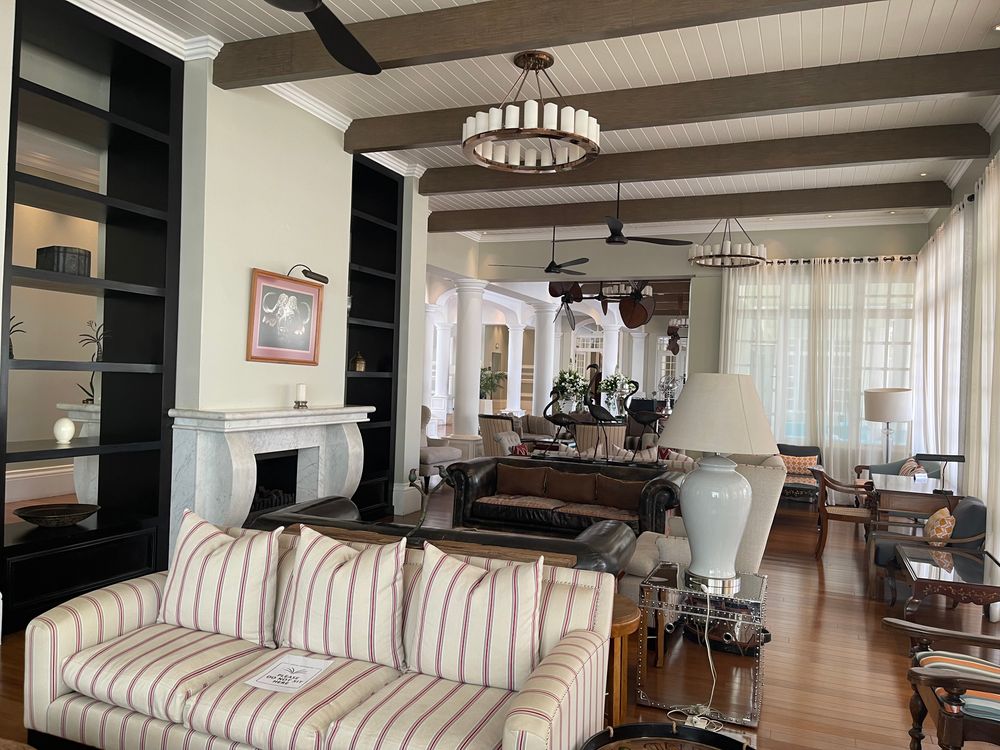
However, our stay didn’t exactly start on the right foot. We arrived late at night to find no one from Hemingways waiting for us with a sign, as we had expected. Fortunately, an airport employee was kind enough to assist us, calling the hotel to confirm that the driver was actually waiting in the car park, not outside the terminal. She walked us over to the vehicle, which was a relief, but it was definitely an unexpected start to our stay.
Once we got settled, the rest of our experience at Hemingways was decent. We had breakfast and one dinner at the hotel. While the service was fine, we didn’t feel that either meal stood out as anything exceptional. It was a solid place to rest, but not necessarily a highlight of the trip.
Still, it served its purpose by being conveniently located and offering a comfortable base for the start of our journey.
Lemala Ngorongoro Camp
After spending a couple of wonderful days in Nairobi reconnecting with friends and reliving cherished memories, it was time to kick off the safari portion of our journey. Our first destination was the Ngorongoro Crater, and we were excited to get started. There are several lodging options around the crater, but for a more authentic and intimate experience, we had our eyes on two camps: Lemala Camp and Entamanu Camp, both of which are known for their genuine safari feel.
Ultimately, we chose Lemala because it offered multi-stay discounts when combined with a stay at Lemala Nanyukie. We had initially considered staying at Asilia Namiri Plains, but we weren’t particularly impressed with the Asilia Highlands Lodge near the Crater. On the other hand, Entamanu is definitely a few notches above Lemala, but we felt the location of Lemala, being so close to the Crater entrance, was unbeatable, especially when factoring in the discount. So, Lemala was our camp of choice.
We followed a travel method we highly recommend: flying into Kilimanjaro International Airport (JRO) via Wilson Airport on SafariLink. This was a very efficient mode of travel, and the departure and arrival processes were handled smoothly. Before we knew it, we were comfortably seated in the domestic terminal at JRO, awaiting our Coastal Aviation flight to the Lake Manyara airstrip.
Upon landing at Lake Manyara airstrip, our transfer to the camp was smooth, and we opted to continue directly to Lemala Camp rather than overnighting in Arusha, which is a common stop for many itineraries. This saved us time and allowed us to get straight into the safari experience. We were thrilled to begin our adventure in one of the most iconic wildlife regions in the world!
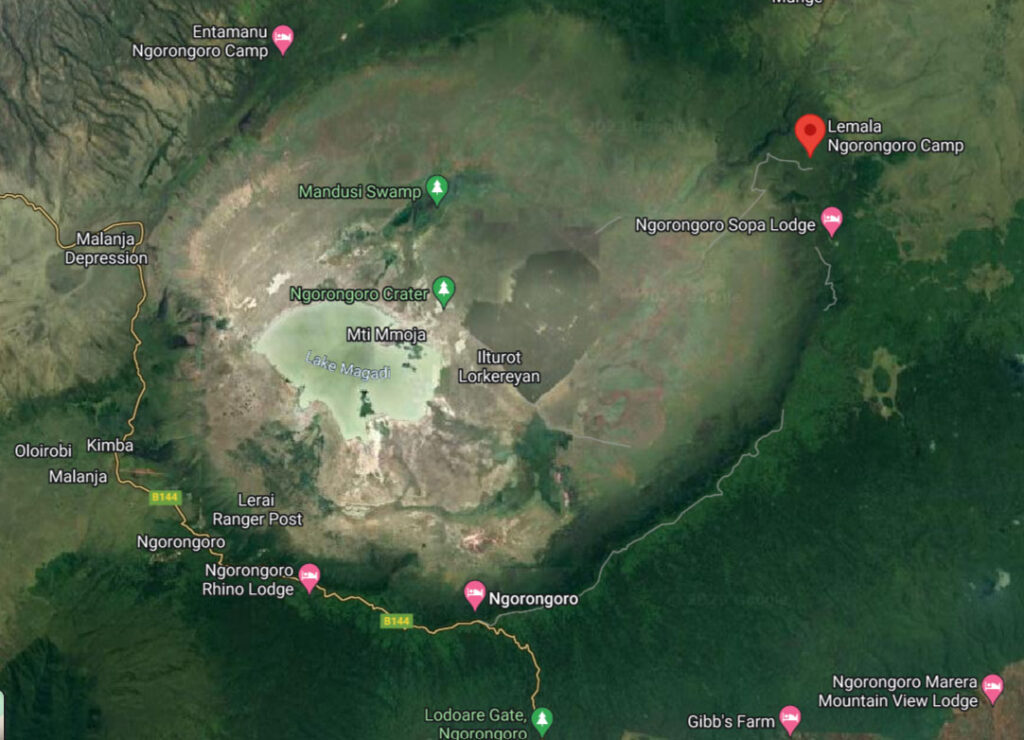
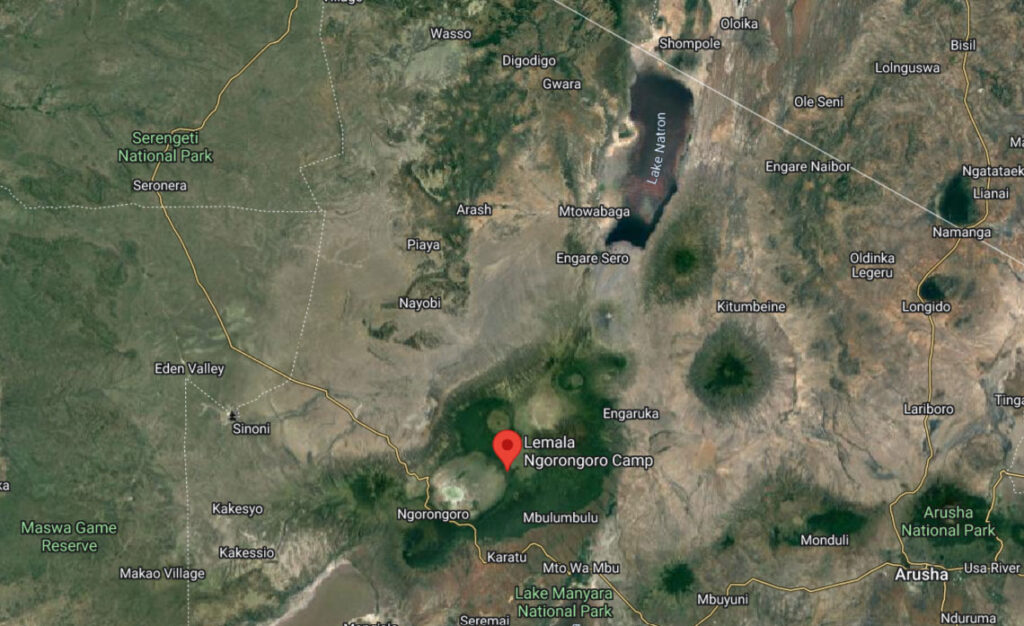
The day of travel ended up being a bit longer than expected, as we arrived at Lemala Camp after dark. We had a quick dinner and then headed straight to bed, preparing for an early start the following morning to head down into the Ngorongoro Crater. While the day was long, we would still recommend heading straight to camp if you have a similar itinerary, as it saves time and allows you to start your adventure right away.
There was a bit of a hiccup with our guide and vehicle. We weren’t particularly impressed with the vehicle, or the guide provided by the travel agent (TA). It turns out that the TA operates its own local presence in Tanzania, rather than outsourcing to local contractors, which is the norm for many agencies. After sharing our concerns, our TA responded quickly and worked with us to relocate us to a full-board arrangement at our third stop, covering the cost themselves. The level of assistance and care we received from our TA was outstanding, and their willingness to resolve any issues during our trip was a clear reflection of their commitment to their clients.
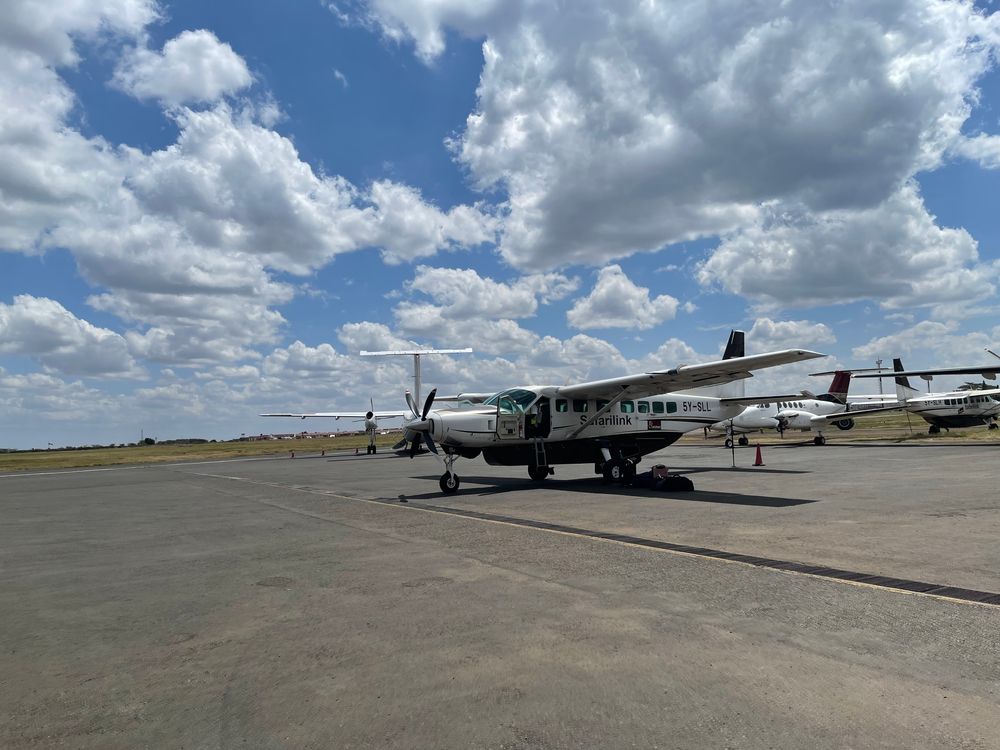
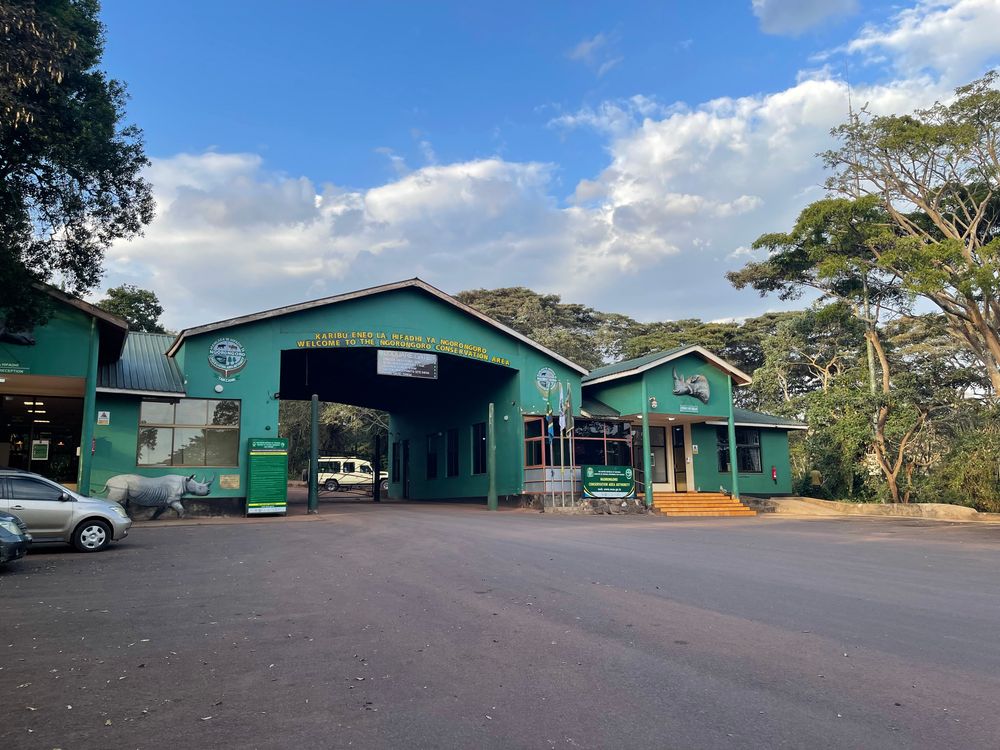
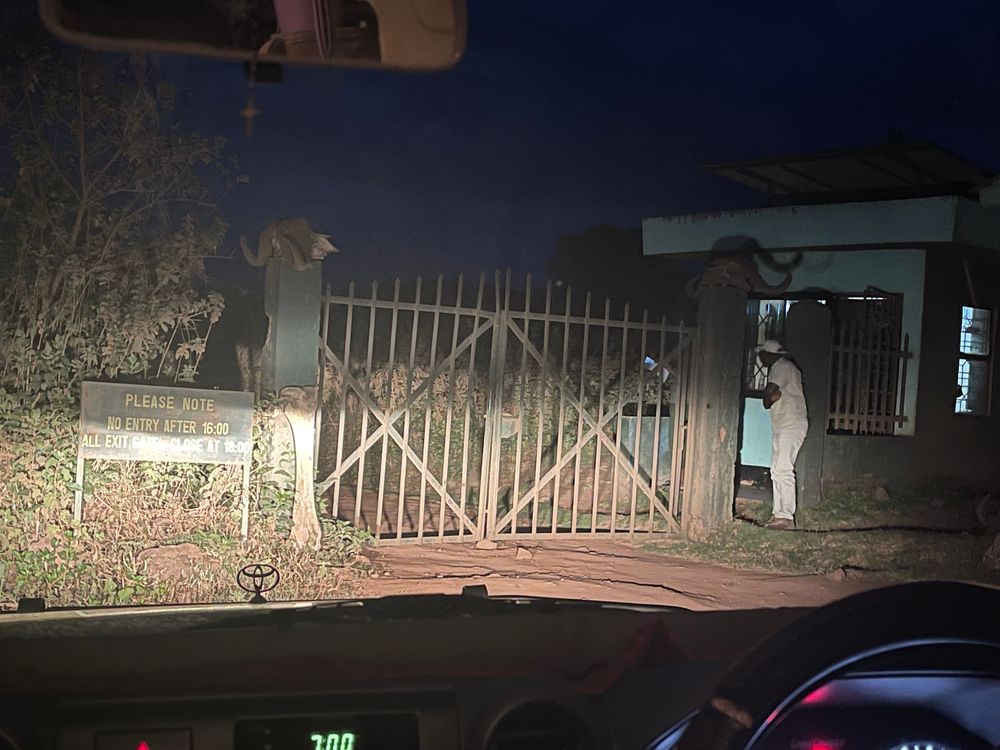
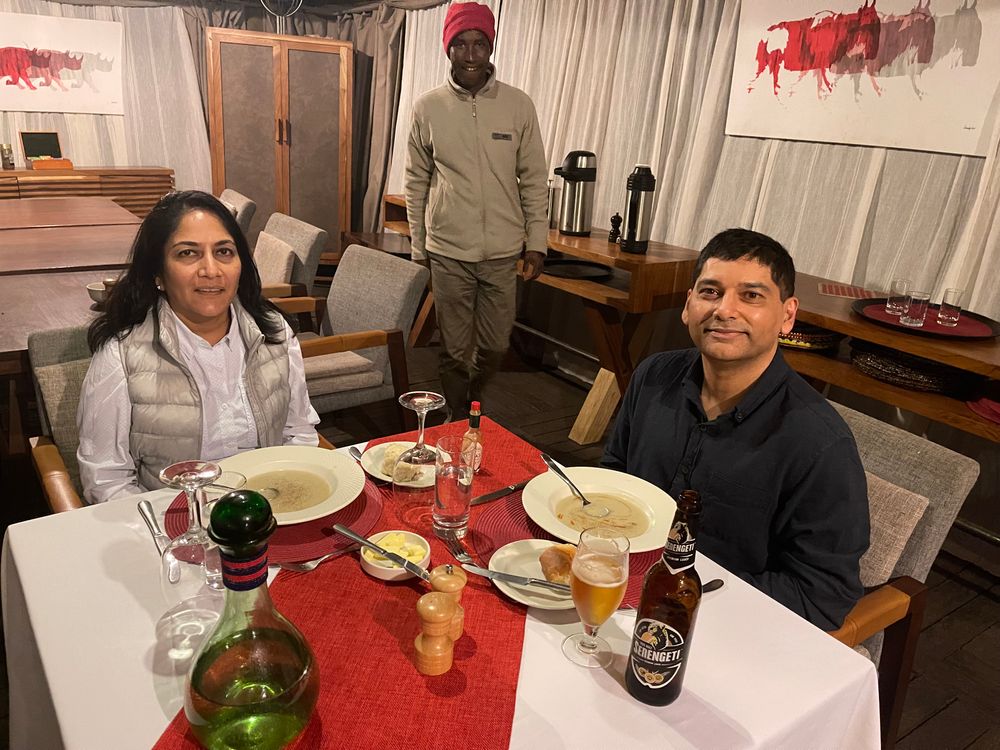
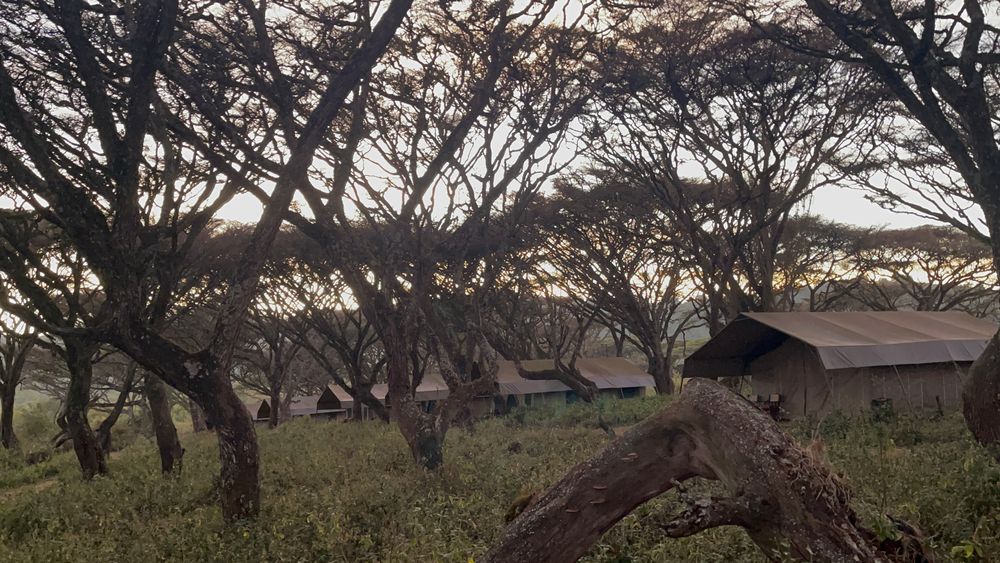

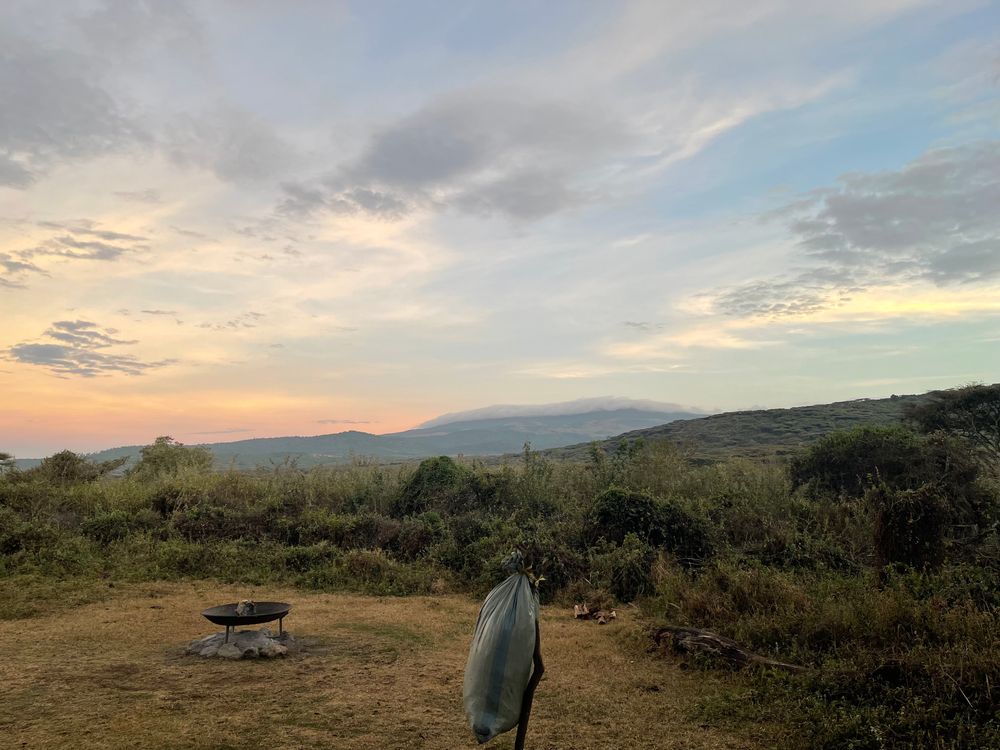
Now, back to Lemala Camp—we were happy with the experience. The tent was well-appointed, with a comfortable bed, hot water bottles, and warm blankets to help ward off the cold night temperatures (it does get chilly up there!). There was also plenty of hot water for bathing, which was a welcome touch after a long day of travel and safari activities.
The camp itself is small, with just 6 tents that blend seamlessly into the Acacia forest, giving it a very intimate and authentic feel. The food was decent overall—no complaints there, though it wasn’t particularly memorable. We would definitely recommend this camp for anyone visiting the Crater and looking for a more authentic experience compared to some of the larger lodges nearby.
On our arrival, we were greeted by a large bull elephant just past the entrance gate. As we were being walked to our tent after dinner, we also spotted a buffalo and a waterbuck—a lovely surprise to start our safari experience.
The camp is located on the northeast corner of the Crater, so getting there requires a drive from Lake Manyara and entering through the Loduare Gate. The drive up the right side of the Crater is somewhat bumpy, and it takes a good hour (about 20+ km) to reach the camp. While the road isn’t the smoothest, the scenery as you ascend is beautiful, and the feeling of being so close to the Crater entrance makes it all worth it.
Ngorongoro Crater is the largest intact, inactive caldera in the world. It’s essentially the collapsed remains of an extinct volcano, which fell in on itself millions of years ago. The Crater floor covers an area of about 250 square kilometers—making it incredibly expansive—and is surrounded by towering cliffs that rise around 600 meters from the floor, creating a stunning and dramatic landscape. It’s often referred to as the “Garden of Eden” for its rich biodiversity.
What makes the Crater so remarkable is that it’s not only large but also one of the few places on earth where you can observe an incredible concentration of wildlife in a relatively small, enclosed area. It’s a World Heritage Site and is part of the broader Serengeti ecosystem, though it falls under the Ngorongoro Conservation Area (NCA) for administrative purposes. The NCA is unique in that it allows both human habitation and wildlife cohabitation, which is a rare setup in protected areas across Africa.
The Crater is also home to Olduvai Gorge, often called the “Cradle of Mankind.” This site is considered one of the most important prehistoric archaeological sites in the world. It was here that Mary and Louis Leakey made groundbreaking discoveries, uncovering some of the earliest evidence of human ancestors dating back millions of years. The Gorge is located within the Conservation Area, and while it’s not on the immediate Crater floor, it’s worth a visit if you’re traveling to or from the Serengeti.
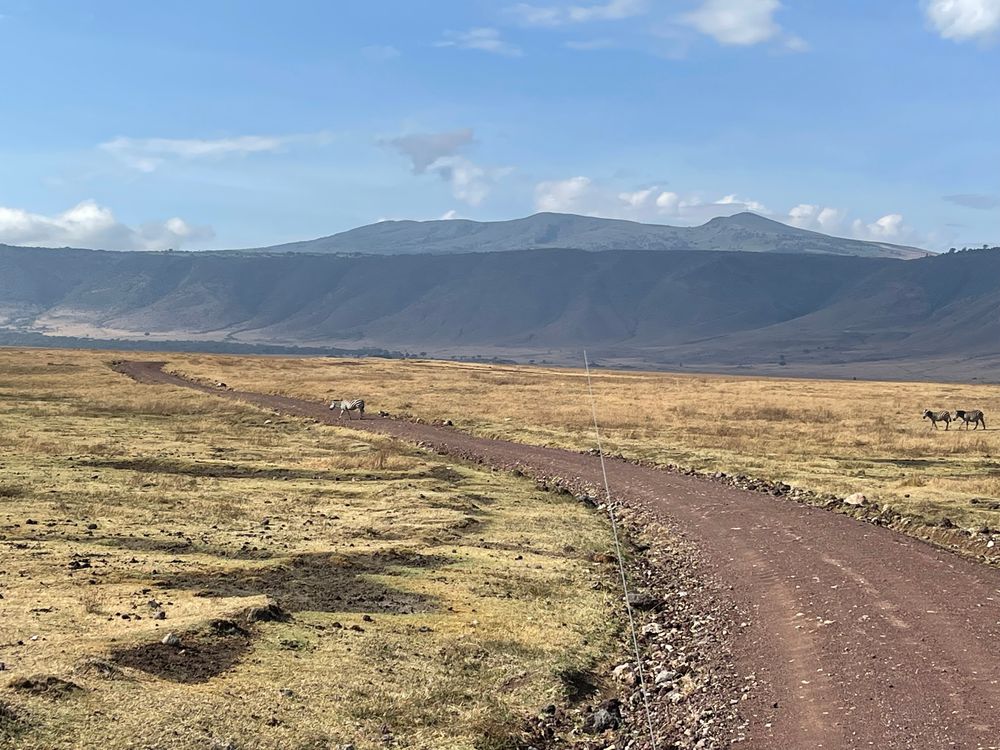
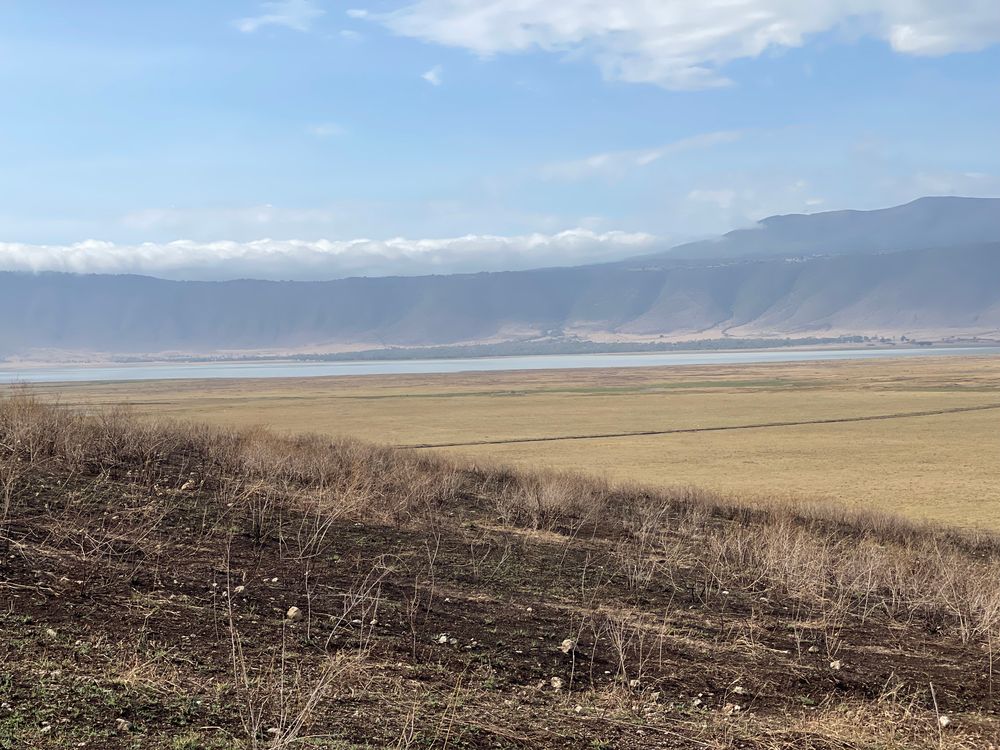
The Ngorongoro Crater is undoubtedly one of the most iconic safari destinations in Africa, offering unmatched wildlife viewing in a unique geological setting. However, crowd management can be an issue, especially during peak times. Given that it’s one of the most popular safari locations, you’ll often find that there are many vehicles on the Crater floor, particularly around the more popular wildlife sightings. This can detract from the otherwise serene and awe-inspiring experience of being in such a pristine and abundant environment.
To help manage the number of visitors, the Tanzanian authorities have implemented certain entry restrictions. One of the most important measures is that the Crater now has daily vehicle limits for the number of visitors allowed to descend into the caldera. This means that only a set number of vehicles are permitted to enter each day, ensuring the Crater doesn’t become overcrowded with safari vehicles. While this is beneficial for conservation and maintaining a peaceful experience, it also means that visitors need to plan ahead.
To avoid potential issues with overcrowding and to ensure smooth logistics, your travel agent (TA) or camp will typically handle the booking of your Crater entry in advance. This is particularly important during busier times of the year when the demand for access is high. The local camps and lodges generally have pre-arranged access slots, and they’ll ensure that your entry is booked for the best possible times, which can help avoid the larger crowds.
In addition to vehicle limits, no off-roading is allowed in the Crater, which means that once you’re on the floor, you’re restricted to the established roads and paths. While this rule helps preserve the delicate ecosystem of the Crater, it does mean that your safari experience might feel less “wild” compared to other private conservancies where off-roading is allowed. However, many guests find that the proximity of the wildlife, coupled with the chance to see such a high density of animals, makes the experience unforgettable despite the lack of off-roading freedom.
For those seeking to avoid the larger crowds, we recommend considering a visit during the shoulder seasons (i.e., just after the rainy season or just before peak season). These times tend to be less crowded, offering a more relaxed experience while still delivering great wildlife sightings. Additionally, early morning game drives tend to have fewer vehicles, so it’s worth arriving as the park opens to maximize your experience.
Despite these logistical factors, Ngorongoro Crater remains a must-see destination. The incredible wildlife density and spectacular views of the caldera floor make it a safari experience that’s truly unmatched.
Lemala Nanyukie Lodge
After two nights at the Crater, we set off early for the long drive to Lemala Nanyukie in the Eastern Serengeti. We retraced our route down the bumpy road, heading towards the junction with the B144.
At this intersection, there’s a fantastic viewpoint offering breathtaking views of the Crater, allowing you to reminisce about the time spent “down there,” just as we did. It’s definitely worth a stop before continuing on your journey.
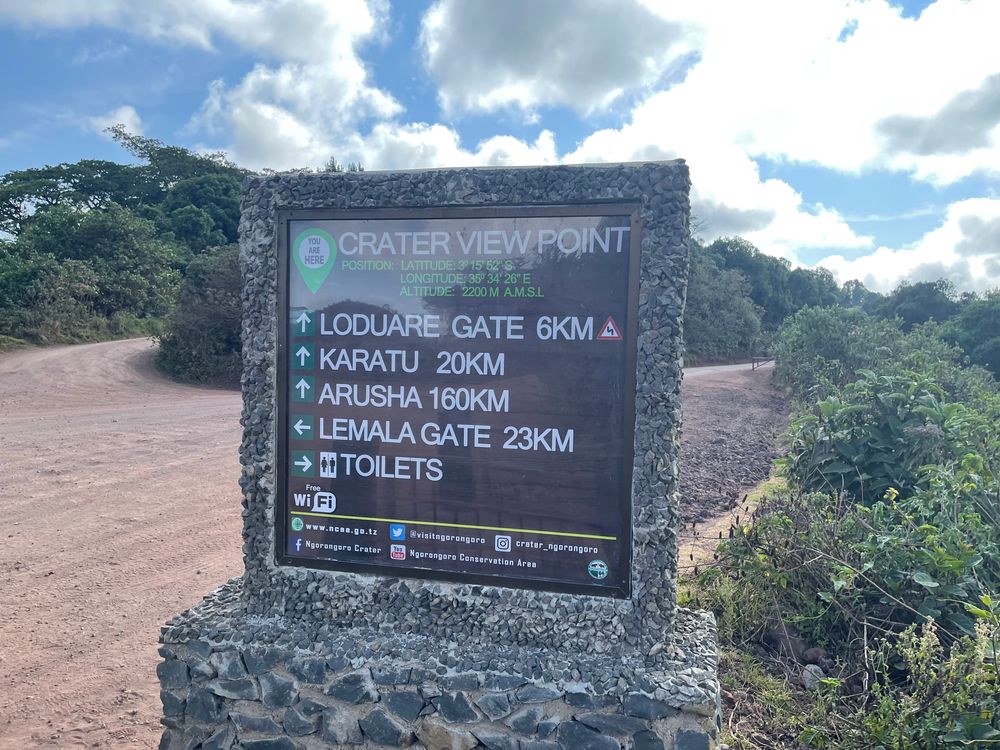
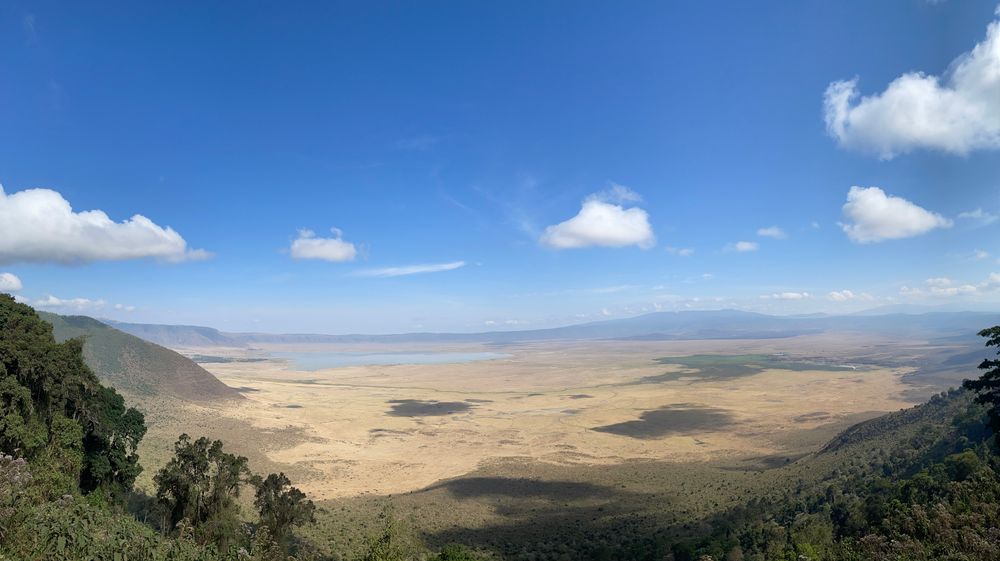
The journey to the Serengeti entrance is lengthy, but the experience and stunning views make it well worth the trip. The landscape was unusually dry, a result of an ongoing drought, reminiscent of our 2019 Botswana trip. At the higher elevations of the Crater, the weather was initially cool, but as we approached the Serengeti entrance, the terrain began to flatten and become dustier, while the temperature warmed up significantly.
After approximately 8 hours of driving, we finally reached the Lodge. Lemala Nanyukie is located in the eastern Serengeti, an area renowned for its cat sightings. The lodge is relatively new and is situated to the east of Seronera, far from the more crowded areas. For reference, Asilia Namiri Plains is located further southeast, in an even more remote part of the region.

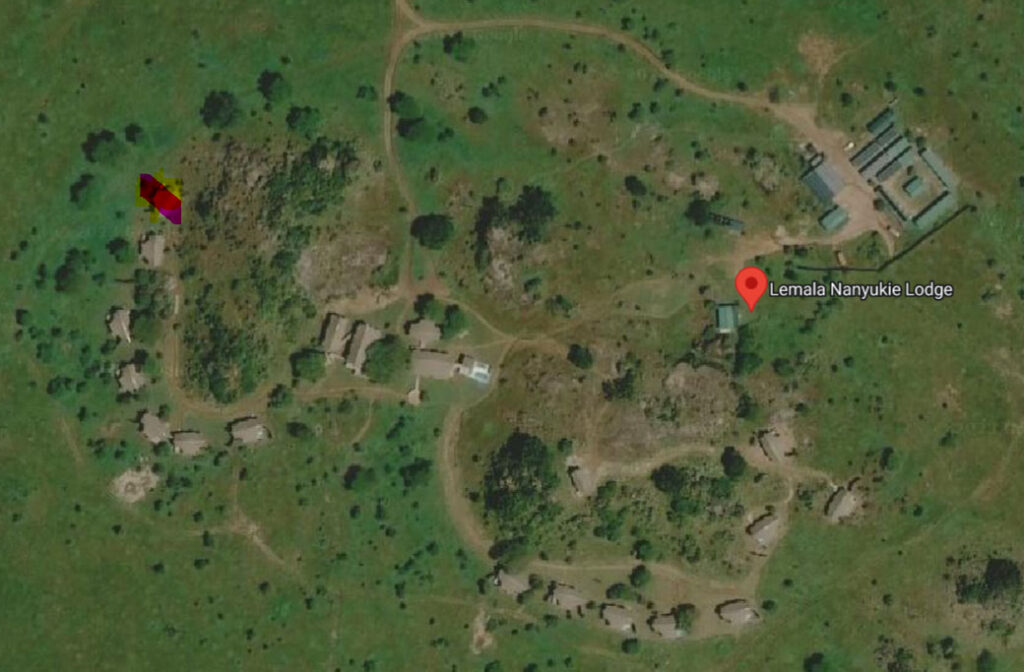
The footprint of the lodge is a bit larger than we typically prefer, but it’s well-designed, with approximately 7 suites on either side of the main area.
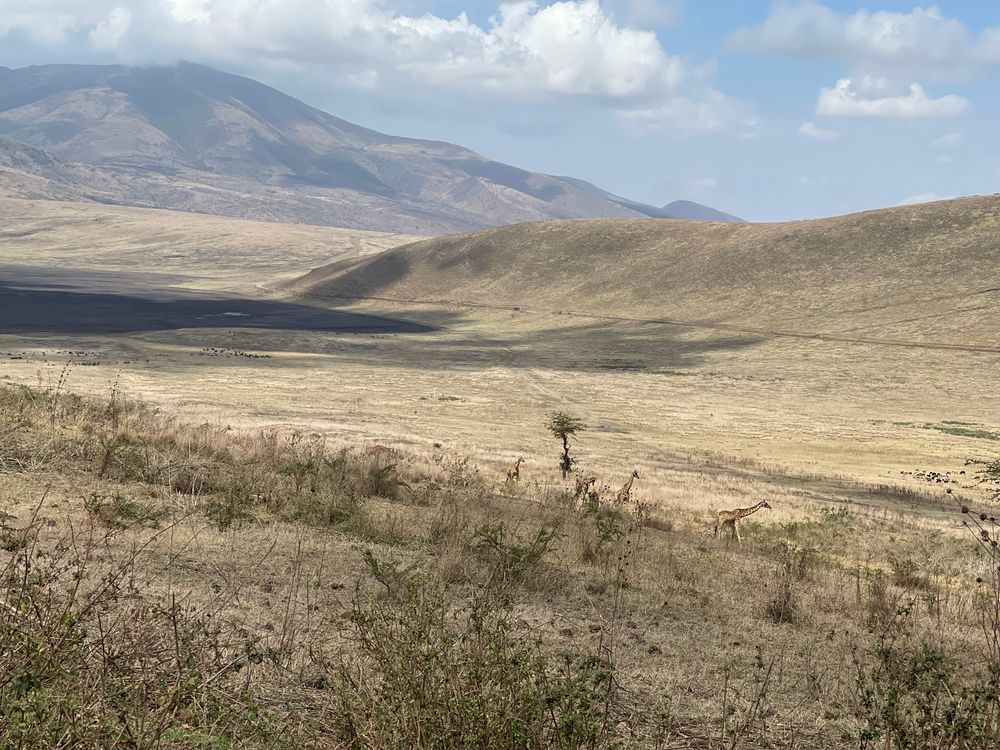
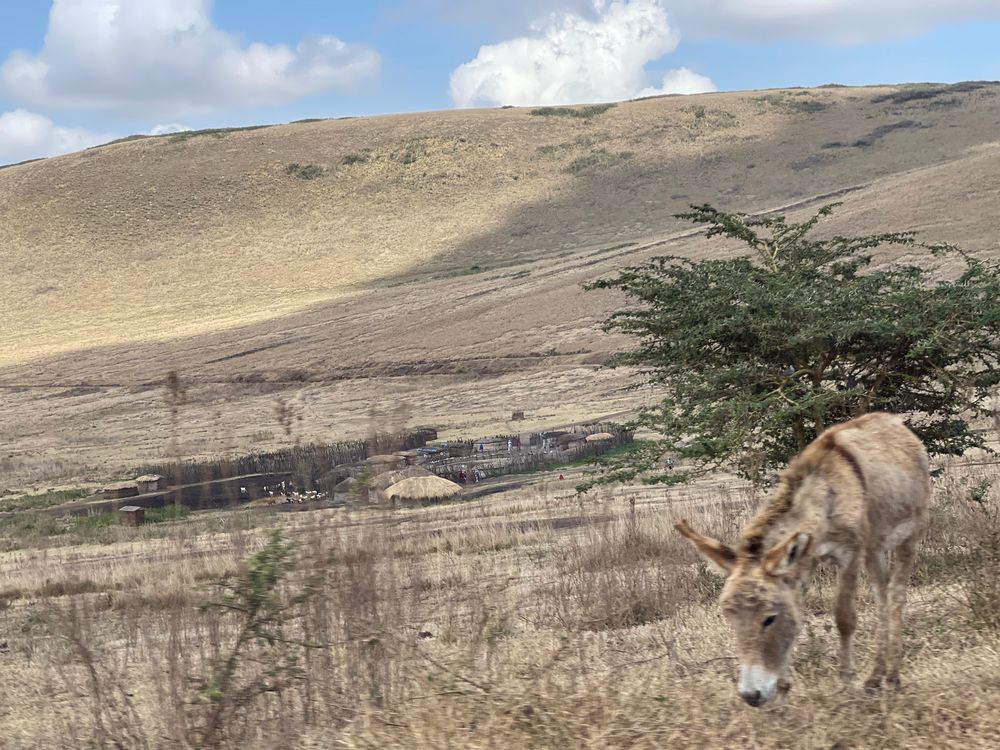
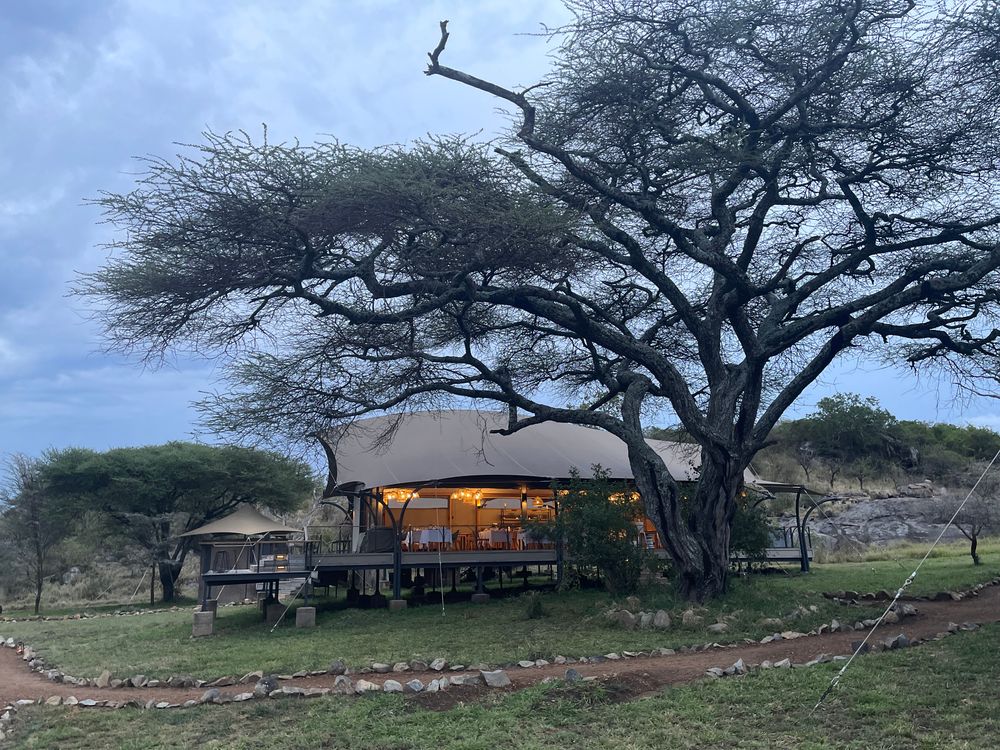
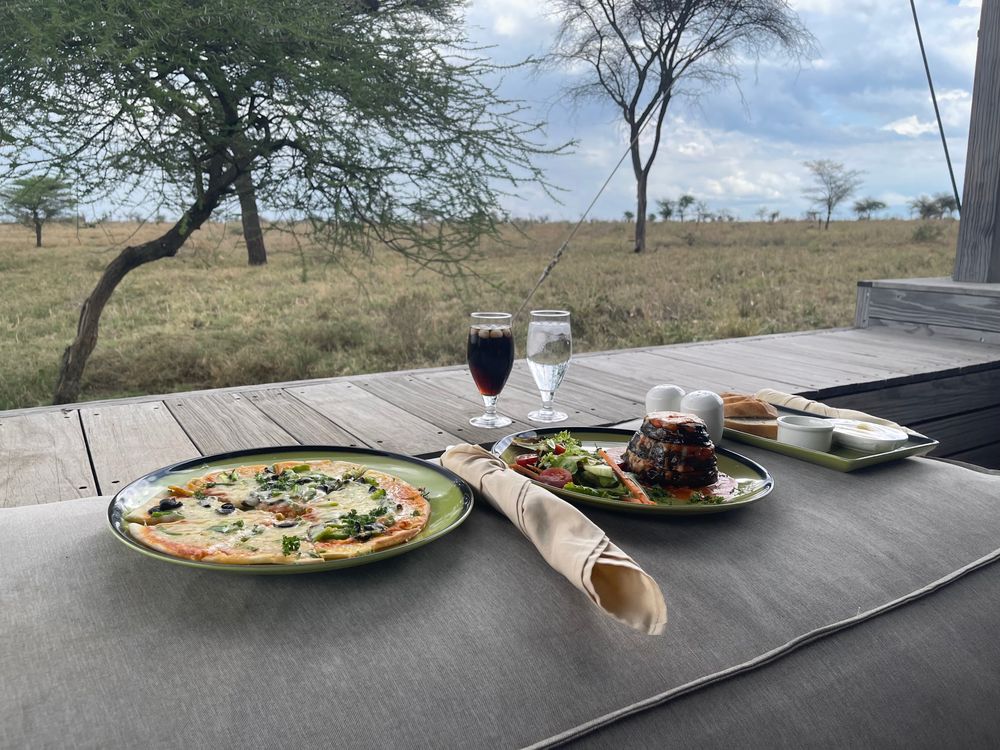
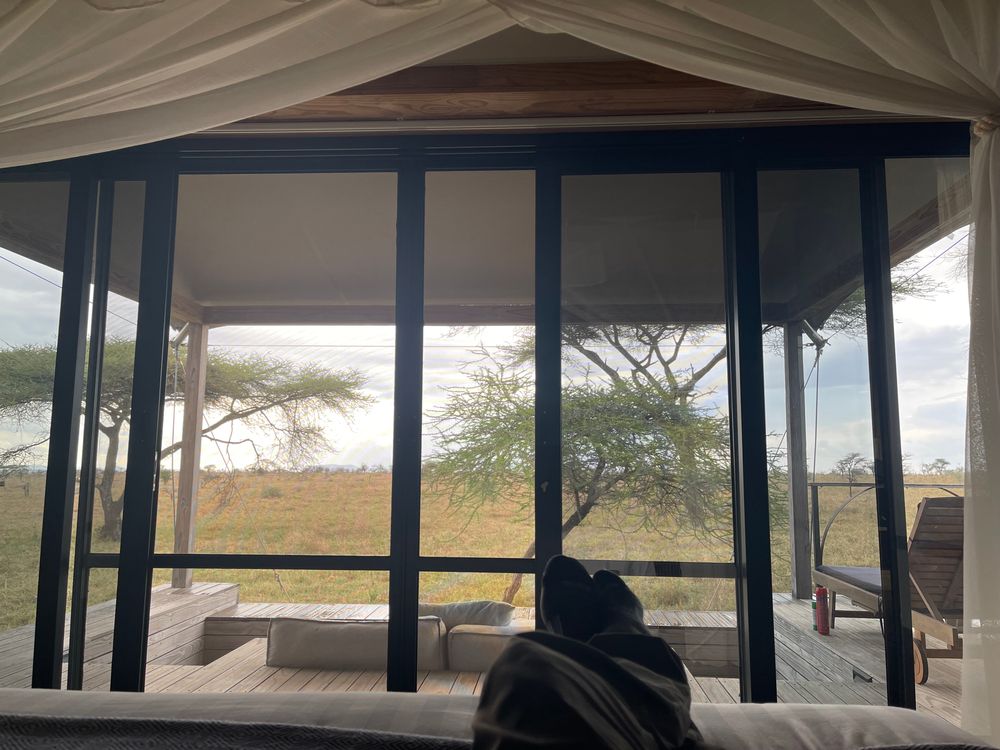
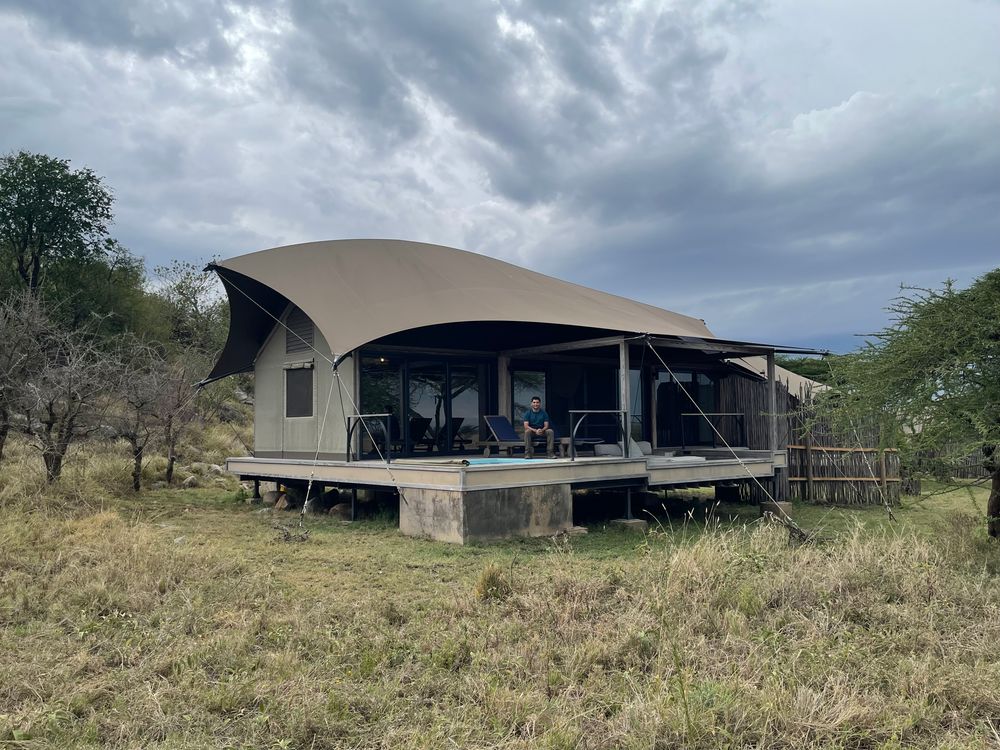
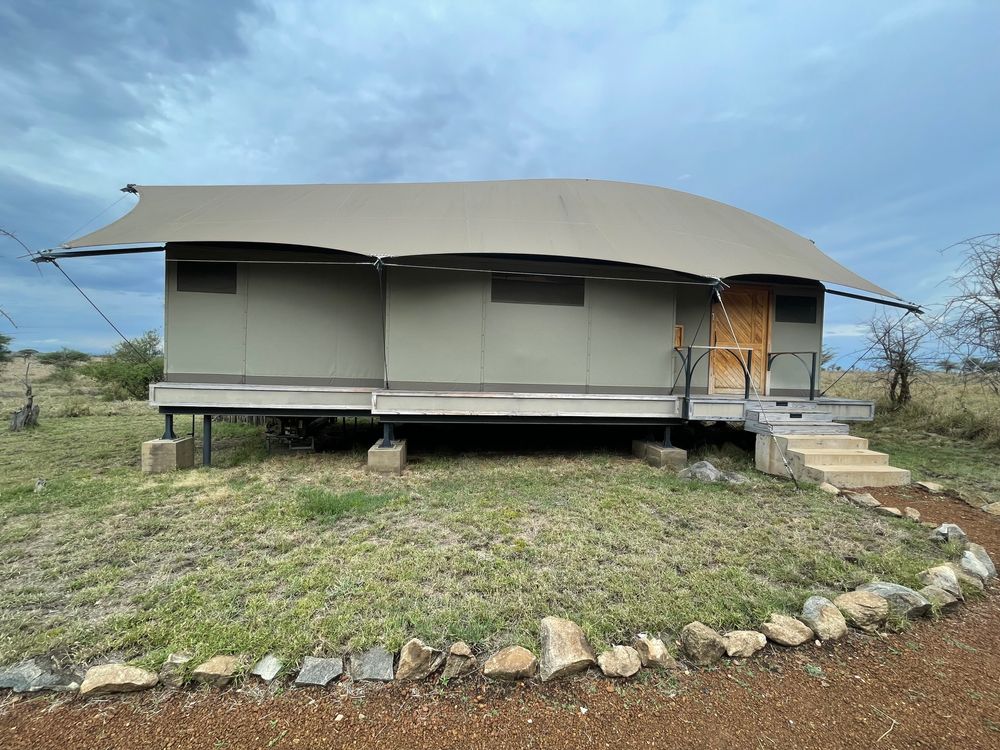

We stayed in Suite 1 on the right side, and we’d recommend requesting this suite—or a similar one on the left side—for added privacy. We were told that a pride of lionesses had been denning their cubs on the kopje directly across from our front door, although the photos we were shown were about a month old. Unfortunately, we didn’t spot any of them during our short stay.
Additionally, this is one of the lodges where security escorts you to your room, as lions have been known to relax in the shade beneath the raised suites (we were shown two recent pictures of this). After dinner on our second night, while walking back to our room, we spotted a leopard on the kopje just around the bend past the main area. The leopard quickly moved to the right, so we couldn’t capture a photo. However, the lodge management arrived shortly after and managed to snap a beautiful evening picture of the leopard. We chose to let the leopard be, as it seemed content to do the same, and continued on to our suite.
Our experience could have been enhanced if we had opted for the full board package with Lemala, which includes game drives with their guides and vehicles, rather than using our private vehicle and guide arranged by our tour operator.
Overall, Lemala Nanyukie is an excellent lodge for its price point and location in the Eastern Serengeti. It’s definitely worth a visit. We highly recommend opting for the Full Board package, which includes game drives with their guides and vehicles. They can also arrange transfers to and from the camp. As for our future travel plans, Namiri Plains is high on our bucket list of lodges to visit, and we will certainly return.
Asilia Sayari Camp
After an incredible couple of nights at Lemala Nanyukie, we were back on the road for our transfer to Asilia Sayari Camp in the Northern Serengeti. But first, let’s take a step back to explain how and why we chose this camp. Our original plan was to visit four different camps. Given our early November travel dates and our knowledge of the Great Migration’s route, we decided it would be worthwhile to visit the Northern Serengeti in hopes of witnessing a Mara River crossing—this time southbound, as the Migration moves toward the Ndutu region of the Southern Serengeti for “calving season.” November is a quieter time for river crossings, as the peak migration months are from July to September when the herds are headed north into Kenya. The benefit of traveling in November is not only fewer crowds but also the opportunity for a more exclusive experience—and that’s exactly what we got.
We were already familiar with Asilia, one of the top safari lodge operators in East Africa, and had heard great things about their Sayari Camp, which is located near the Mara River and the Kenya-Tanzania border. We looked at other options in the area, but many of them didn’t appeal to us—some were too far south of the river or felt less authentic (e.g., Lemala Kuria, Lamai Serengeti, Serengeti Bushtops, etc.). Sayari was the only Asilia camp we visited on this trip (though we seriously considered adding Namiri Plains—unfortunately, we didn’t have the extra days). While we couldn’t take advantage of any special offers, we can confidently say that Sayari was absolutely worth it. We were not disappointed!
Now, with that bit of background, let’s continue. The camp is located just south of the Mara River, southeast of the Kogatende airstrip (no more than 10-15 minutes from the camp). A Google Maps image (shown on the left below) incorrectly marks the location—”X” is where the camp is actually situated.

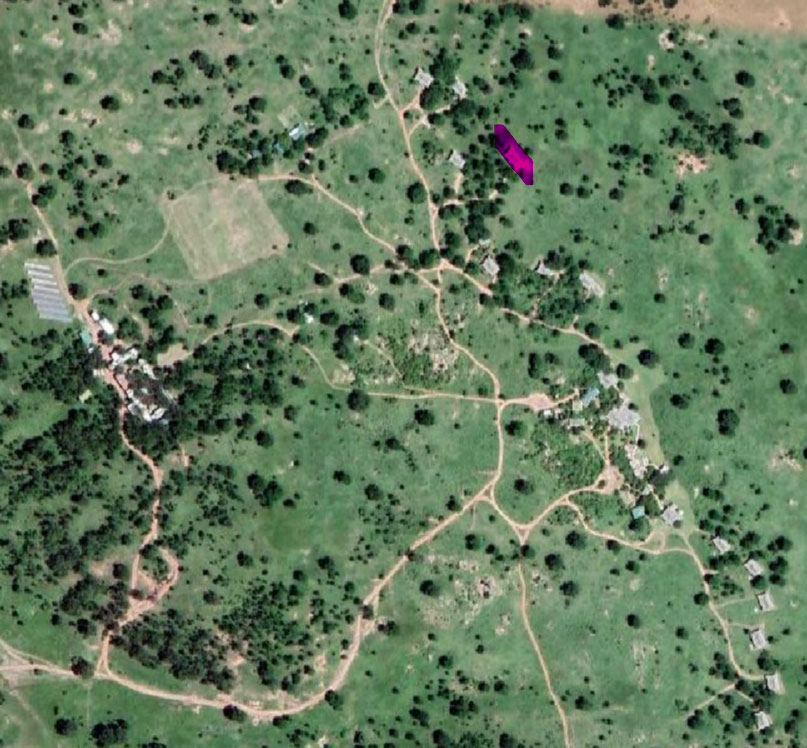
Sayari does have a relatively large footprint, but during our stay, the entire right side of the camp was under maintenance, which made the experience more intimate with only about 8 suites open. As mentioned, the location is perfect, with the Mara River running just north of the camp, providing numerous opportunities to catch the southbound migration.
Let’s take a moment to revisit our drive, especially for those who may have already traveled this route or are planning to in the future. We opted for the more scenic route, following the blue-highlighted path, which took us out of the park near the Ikorongo Game Reserve and then back in at the Tabora Gate. From there, it’s about a 45-minute drive to the camp. While Google Maps suggests the journey takes around 4 hours, we ended up taking a couple of hours longer due to stops and sightseeing along the way. Overall, it was a good drive, offering some beautiful landscapes and a more leisurely experience.
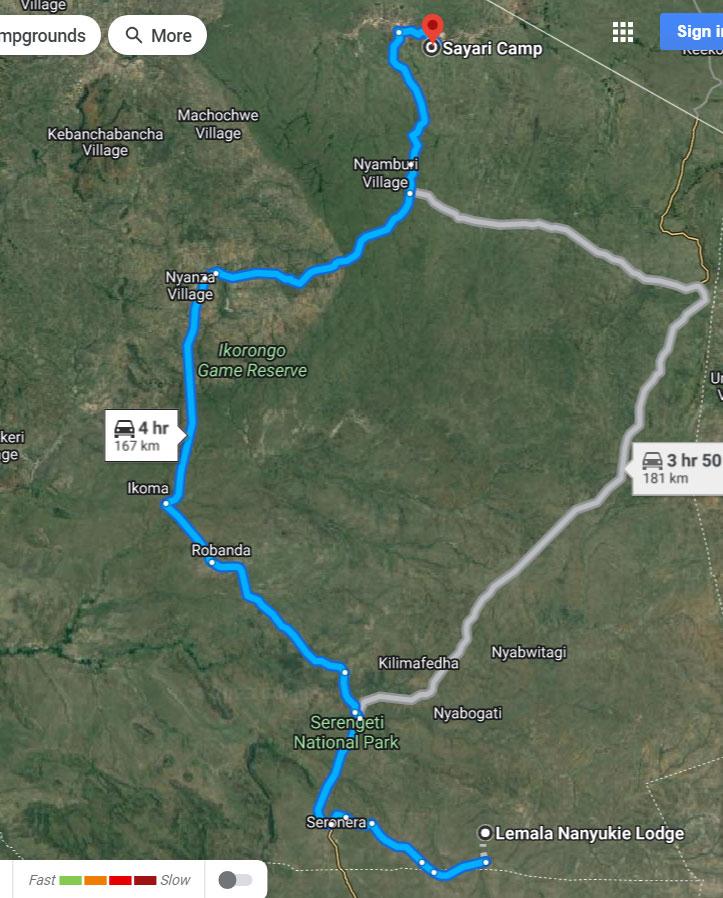
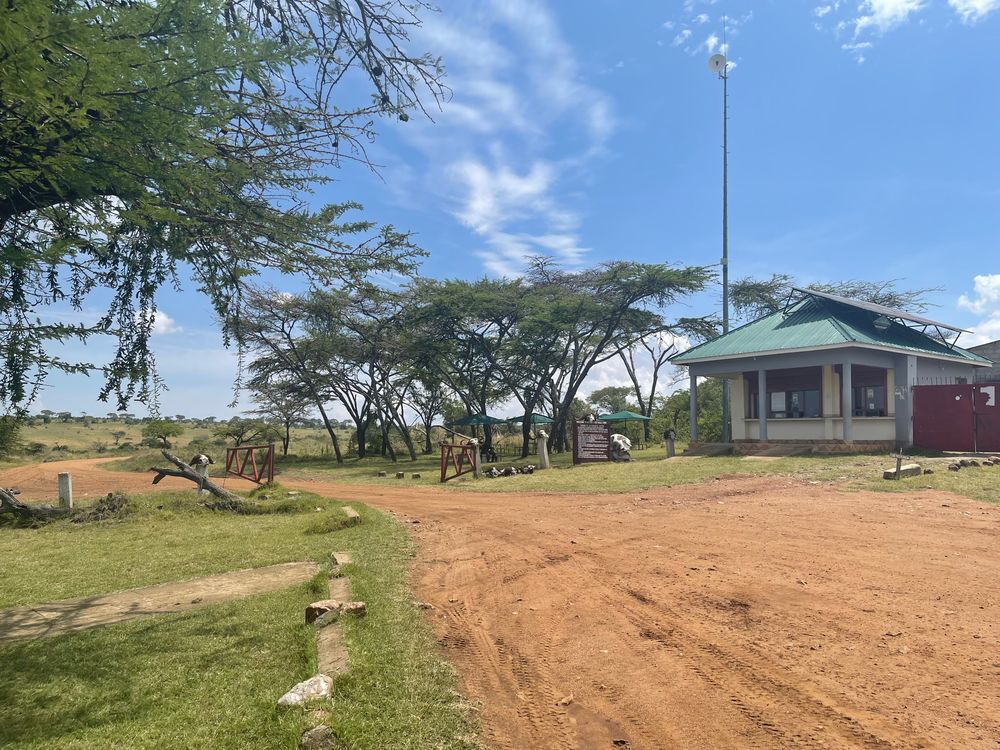
That said, if we were to do this again (which we certainly will!), flying from Seronera to Kogatende would be our preferred mode of travel. It’s quicker and more efficient, leaving more time for the game drives and less time spent on the road.
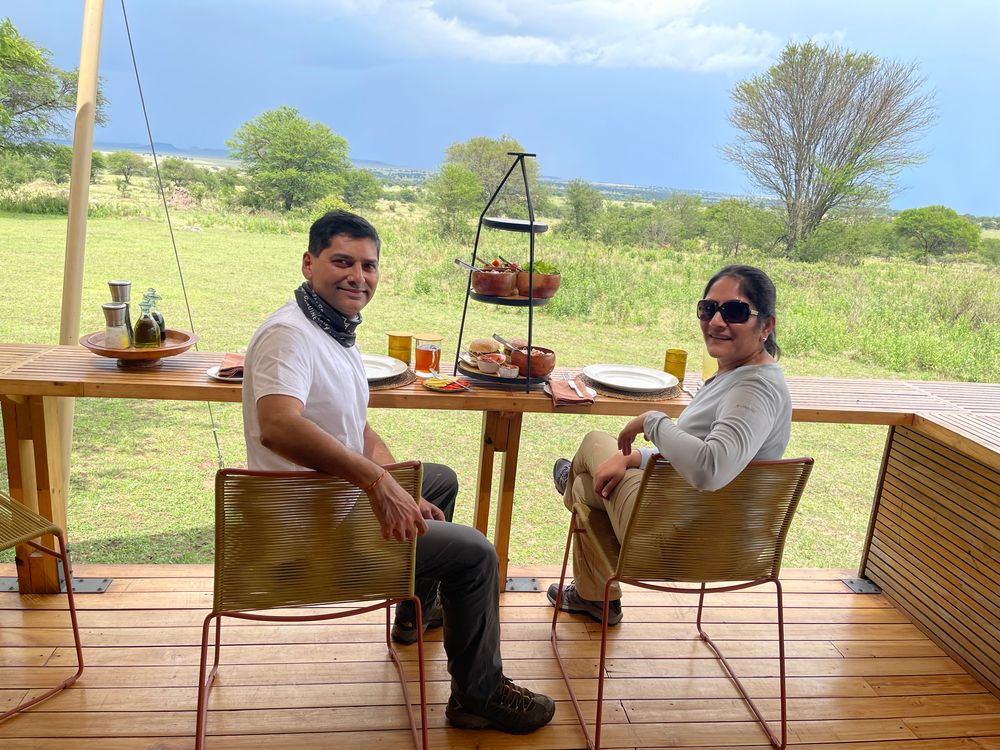

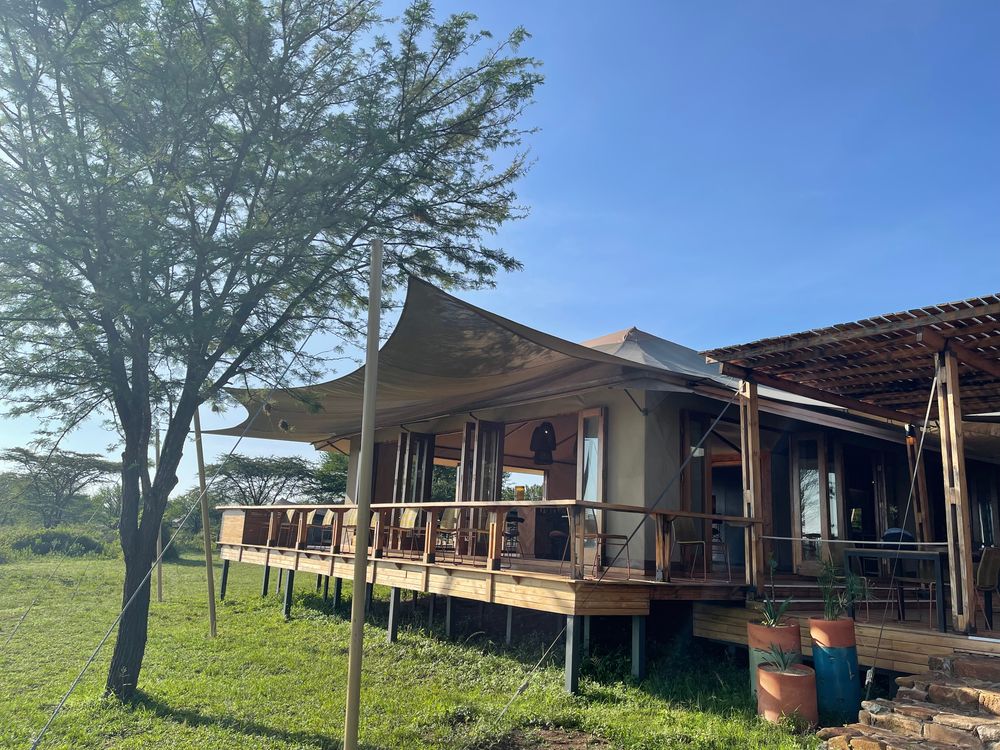
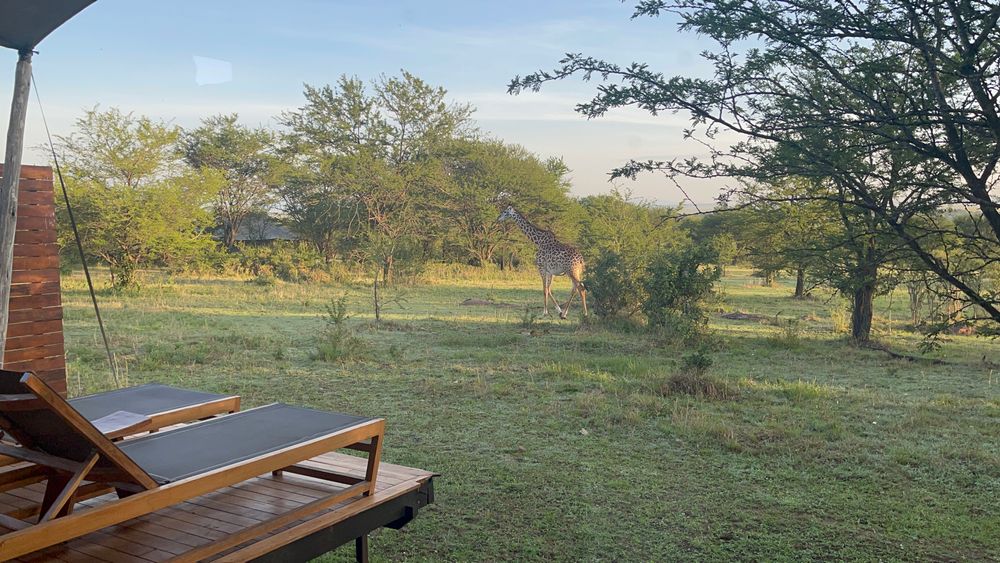
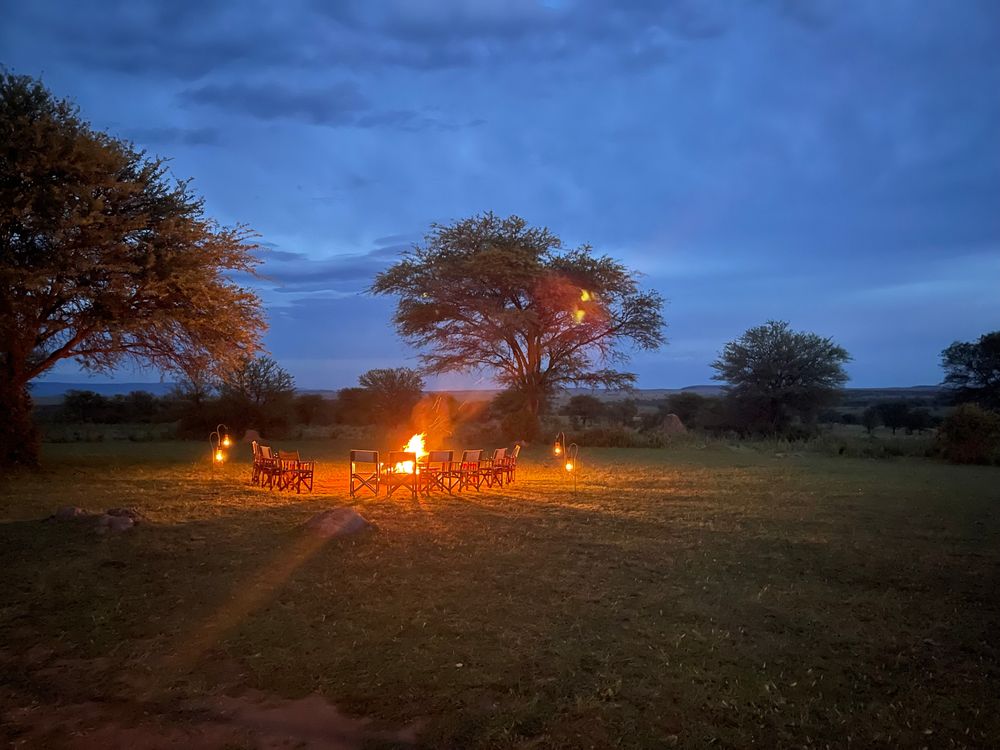
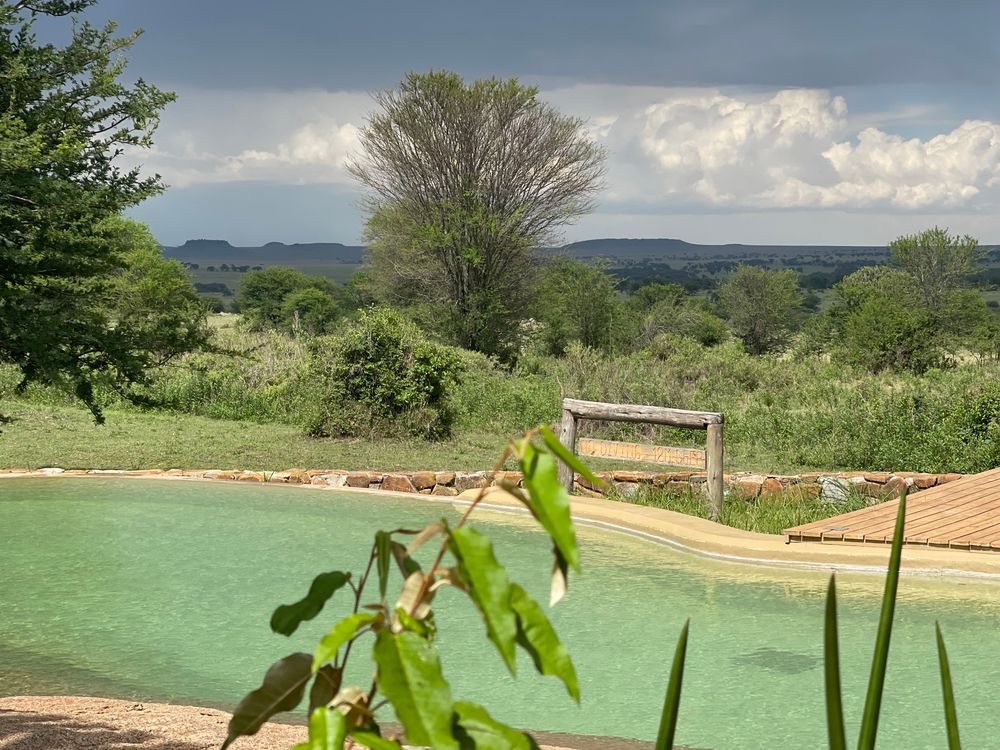
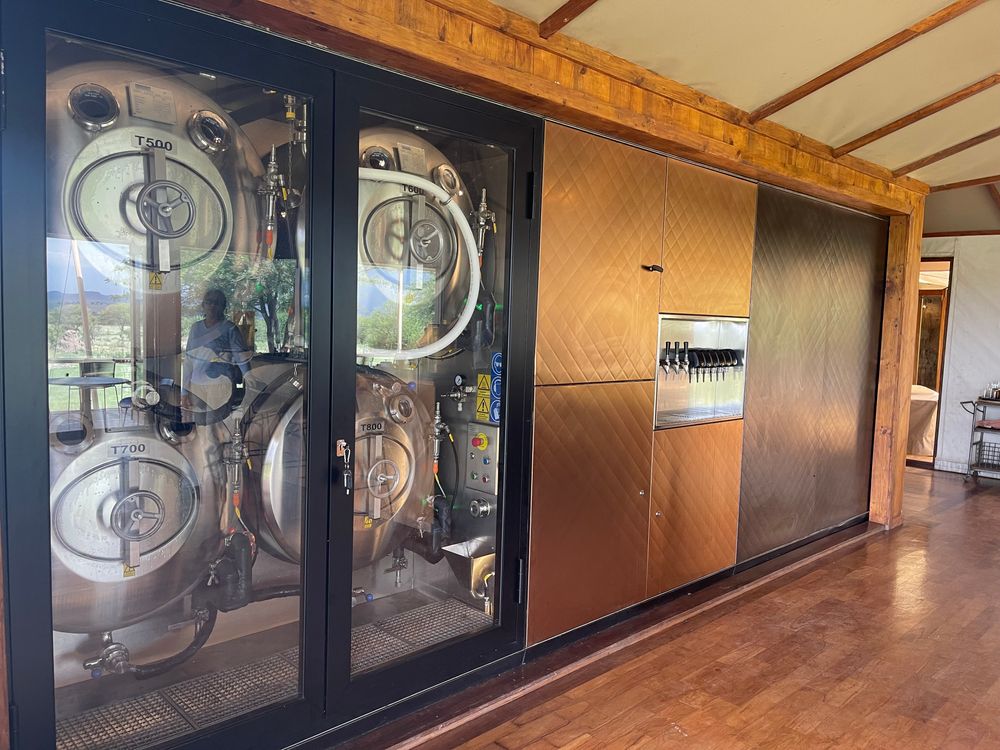
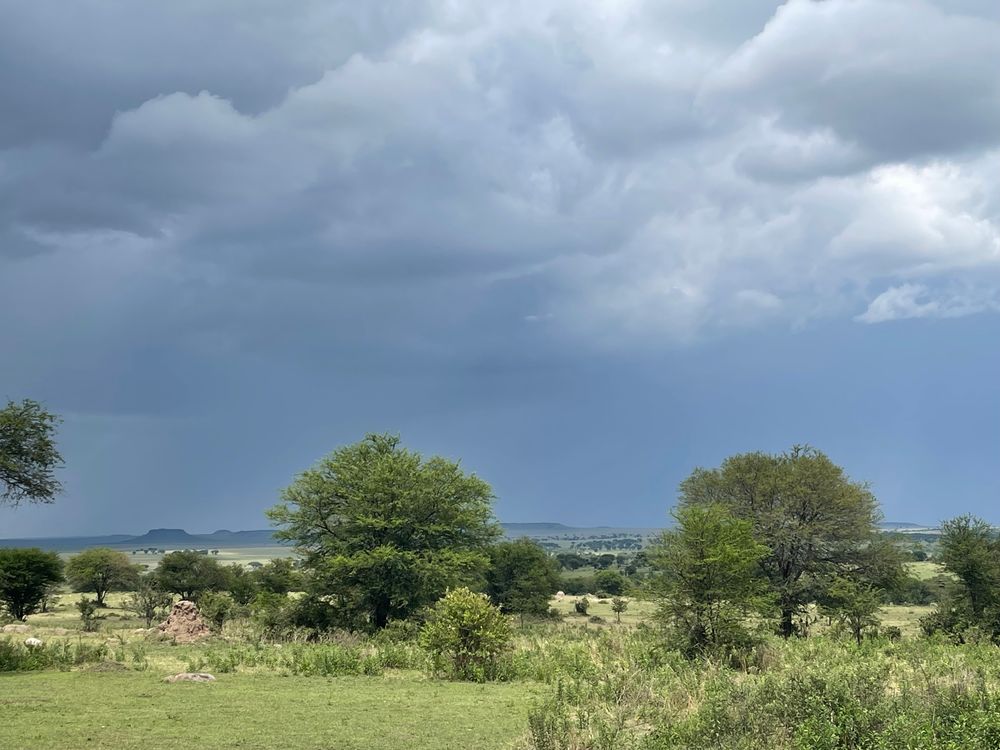
As one of the better camps near the Mara River, Sayari is ideally located for the migration season. The guides are always on the lookout for the herds, and getting to the river doesn’t take long at all. The camp itself is quite spacious, and to make it more convenient for guests, they offer golf carts to transport you to your suite after dark, so you don’t have to walk through the camp at night.
We had some truly incredible sightings at Sayari Camp. One of the highlights was crossing the Mara River near the Kogatende airstrip, heading toward the international border with Kenya. The “bridge” we crossed is located near the airstrip, and once you cross the river, you enter the open plains between the Mara River and the international border. We spotted large herds of wildebeest grazing, which suggested that the southbound migration was underway—this boosted our hopes of witnessing a river crossing in the days to come.
Standing at the border was a unique experience—while the international boundary is simply a marker, it’s an amazing feeling to be straddling two countries. Guides from both Kenya and Tanzania are highly respectful of the border, ensuring they don’t cross into each other’s territory. Meanwhile, the animals roam freely, moving between both sides without restrictions.
The next day, we were fortunate enough to witness our first of three river crossings! We set out on our morning game drive, and around 730 am, our guide received a call about a herd of wildebeest gathering on the banks of the Mara River, preparing to cross. Luckily, we weren’t far from the location. Upon arrival, we were the only vehicle there, and within seconds—literally! —the wildebeest began their crossing.
Our guide expertly positioned the vehicle so that as the wildebeest crossed the river, they climbed the banks directly in front of us and walked past our right side—extremely close! The herd was massive, and it took several minutes for them all to cross. It was an unforgettable, almost exclusive experience of witnessing the migration up close—truly one of the highlights of our trip!
We’ll share one more unforgettable experience—the second of our three river crossings. This one took place later the same day, in the afternoon. We came across another large herd gathered along the riverbanks, further east of where we had witnessed the morning crossing. We patiently waited for nearly three hours (skipping lunch in the process) as the wildebeest seemed hesitant to take the plunge. Some would approach the water, only to turn back up the bank, creating a bit of suspense. Finally, one brave wildebeest made the leap, followed by another, and then the crossing was on!
For this sighting, we had two other vehicles with us, which was still relatively quiet compared to the crowds that gather during the northbound migration.
As many people know, the Mara River crossings are famous not just for the wildebeest but for the crocodiles that call the river home. Watching a crocodile attempt to take down a wildebeest during a crossing is quite a spectacle (though it can be a bit gruesome). We saw a croc coming in from the left, and for a moment, we found ourselves cheering on the wildebeest to make it safely across. Unfortunately, the croc managed to grab one wildebeest, pulling it under the water. While it was saddening, it also brought the realization that in nature, animals kill for food—not for sport.
We also learned a fascinating fact about wildebeest behavior: it only takes one to take the plunge, and the rest of the herd will follow. Unlike other species that have a matriarch or leader, wildebeest operate with a “follow the leader” mentality, where as one animal starts moving, the rest instinctively follow. It was incredible to witness this natural behavior in action.
Beyond the incredible migration, we had a few other memorable sightings. With the rains having recently passed, the Northern Serengeti was much greener compared to the Crater or Eastern Serengeti, and the landscape was absolutely stunning. The lush plains provided a striking contrast to the more arid regions we’d visited earlier in the trip.
- asilia-sayari-camp-game-sighting-6
- asilia-sayari-camp-game-sighting-7
- asilia-sayari-camp-game-sighting-8
- asilia-sayari-camp-game-sighting-9
- asilia-sayari-camp-game-sighting-10
- asilia-sayari-camp-game-sighting-11
- asilia-sayari-camp-game-sighting-12
- asilia-sayari-camp-game-sighting-13
- asilia-sayari-camp-game-sighting-14
- asilia-sayari-camp-game-sighting-15
One of the highlights was enjoying lunch out in the Serengeti plains. There’s something truly special about dining in such an open, vast setting, surrounded by the beauty of nature. It’s an experience that adds an extra layer of magic to the already breathtaking landscape.
Overall, we couldn’t have been more thrilled with our experience at Asilia Sayari. The staff was exceptional—one of the best we’ve encountered. They took outstanding care of us throughout our stay. Our guide was fantastic, making every game drive memorable. From start to finish, our time at Sayari was incredible. We highly recommend this camp for anyone looking for an unforgettable Serengeti experience.
Transfer to Nairobi
Originally, we were scheduled to re-enter Nairobi via the Isibania border crossing, which involved taking a bush flight from Kogatende to Tarime, a car transfer to the Isibania border, followed by a switch to a Kenyan vehicle for onward travel to Migori, and finally another bush flight to our next camp in the Maasai Mara. While this route may sound long and tedious, it’s the best option for same-day transfers to the Mara. However, due to repairs at the Migori airstrip, our plans had to change. Instead, we returned to Kilimanjaro (JRO), flew into Wilson Airport in Nairobi, spent the night at Tamarind Tree Hotel, and then connected to our next camp (Ol Donyo) the following morning.
We were made aware of this change before confirming our stay at Sayari Camp. Given our desire to visit the Northern Serengeti, we were happy to go along with the change.
Ol Donyo Lodge
Our first experience with Great Plains Conservation (GP) was finally underway, and after hearing so much about this esteemed operator, we were eager to see what it had to offer.
Ol Donyo Lodge is located in the private Chyulu Hills Concession, which borders Amboseli National Park. This is a vast concession—approximately 275,000 acres—home to just one lodge. The main advantage of staying here is the exclusivity, along with the exceptional hospitality for which Great Plains is known. On the flip side, the downside could be wildlife sightings. With fewer suites and only 2-3 vehicles on game drives spread across the expansive concession, communication on potential sightings can be limited. However, we were fortunate to have an excellent guide who knew the area well, so we didn’t feel the typical disadvantages.
We overnighted at Tamarind Tree Hotel to be close to Wilson Airport for an early start the next day. After a quick stop at Amboseli to drop off some passengers, we made our way to Chyulu Hills. The effects of the ongoing drought were immediately noticeable—the landscape was dry and parched, and the heat was intense. Given how arid the terrain appeared, we weren’t overly optimistic about spotting the specific wildlife we had come to see—namely, the “Big Tuskers,” tree-climbing lions, and Gerenuks. But to our surprise, we were in for a much more rewarding experience than we expected.
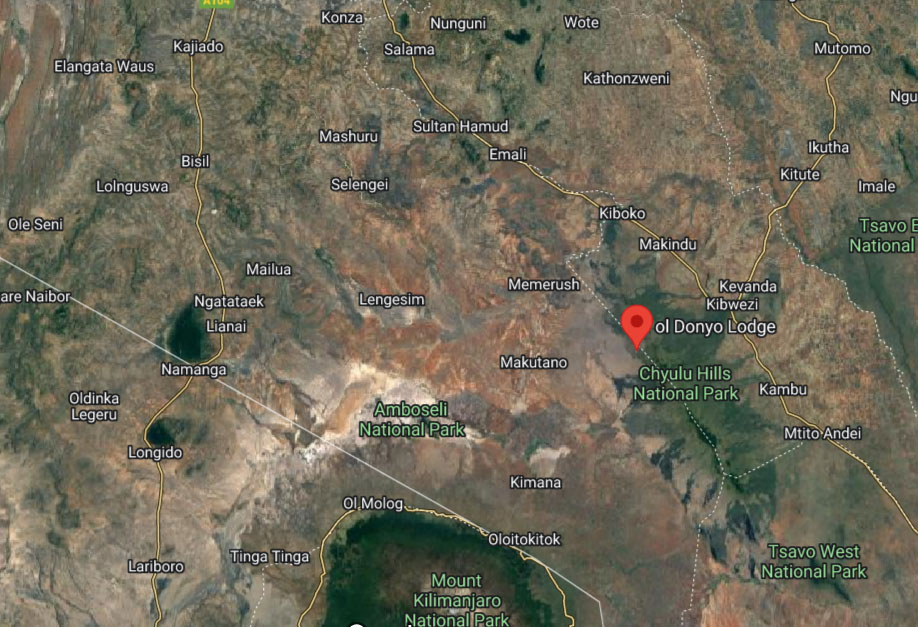
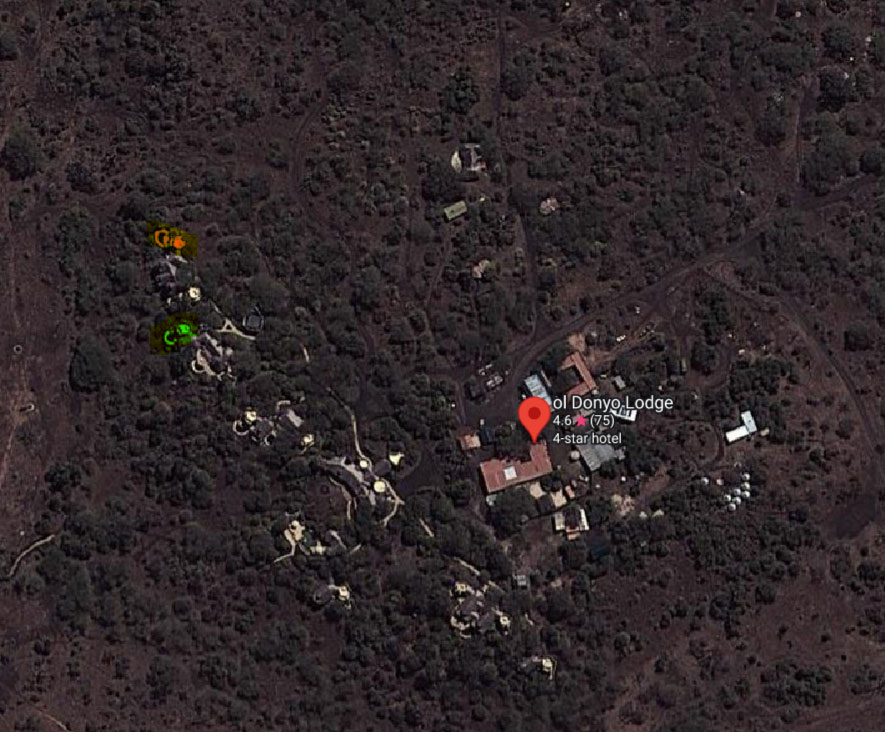
Ol Donyo stands out in the Great Plains Conservation (GP) portfolio in that it’s not a traditional tented camp. Instead, the lodge maintains a more permanent structure with the original casita-style design, featuring whitewashed walls and large glass windows, offering a more solid, spacious feel. This gives it a distinctive charm compared to other GP properties that are typically tented. Additionally, for those interested in exploring more of the region, it’s possible to add a day trip to Amboseli National Park, making Ol Donyo a great base for combining the exclusivity of the Chyulu Hills with the iconic wildlife of Amboseli.
Ol Donyo Lodge seamlessly blends into its surroundings, offering stunning views over a watering hole. There are two hides on the property, allowing guests to get up close to the wildlife as they visit the water, offering an incredible chance for intimate, eye-level encounters.
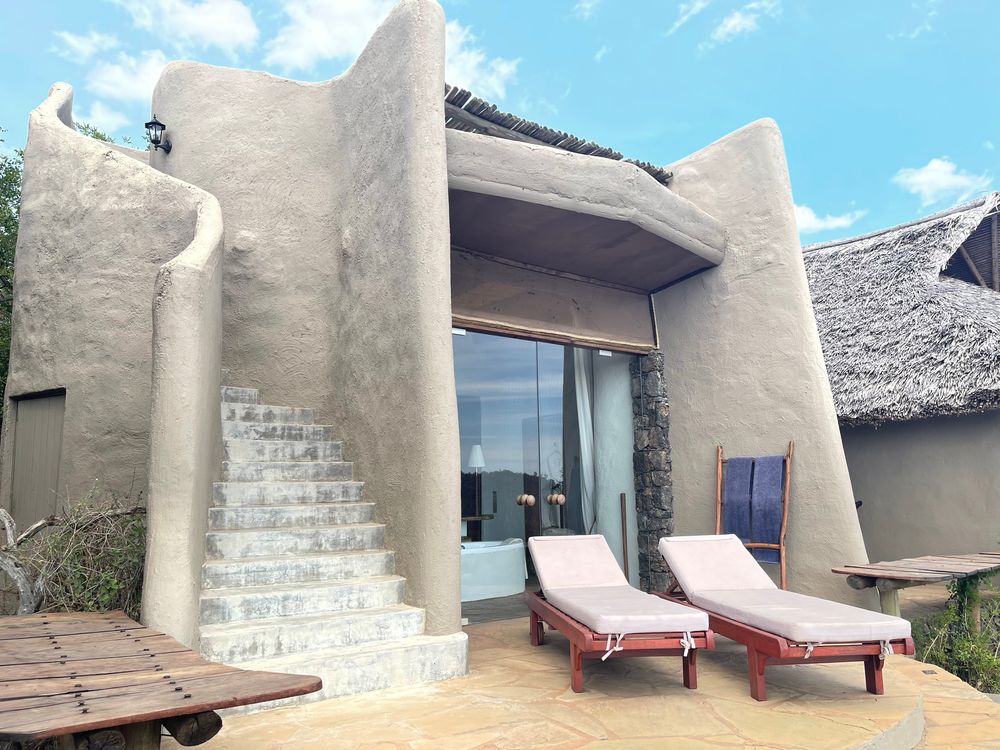

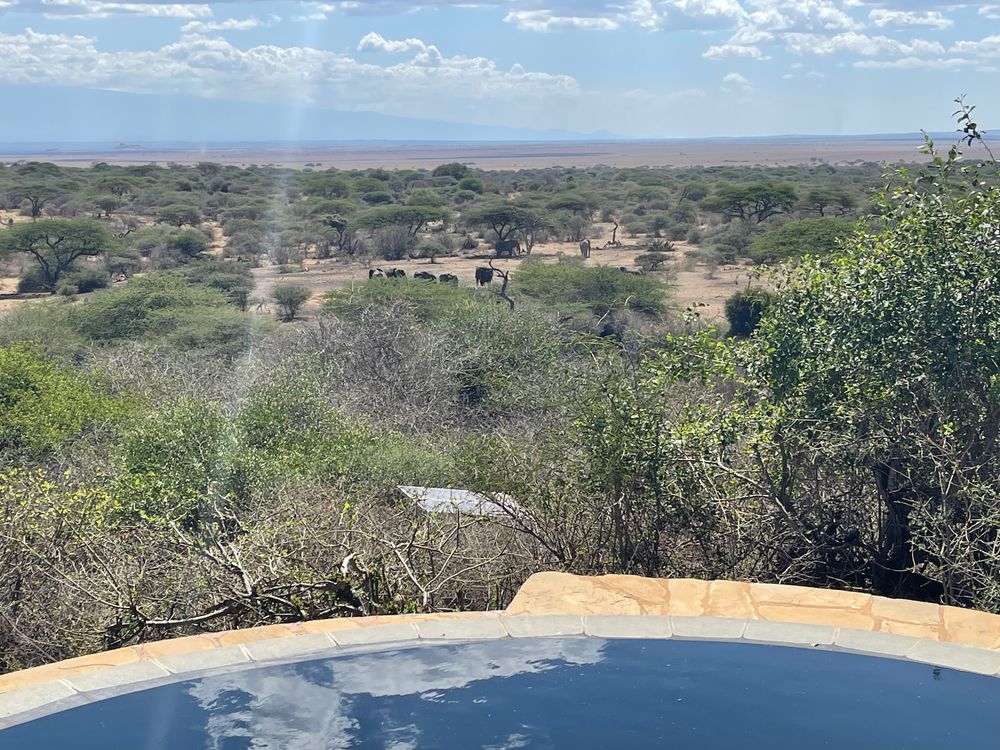
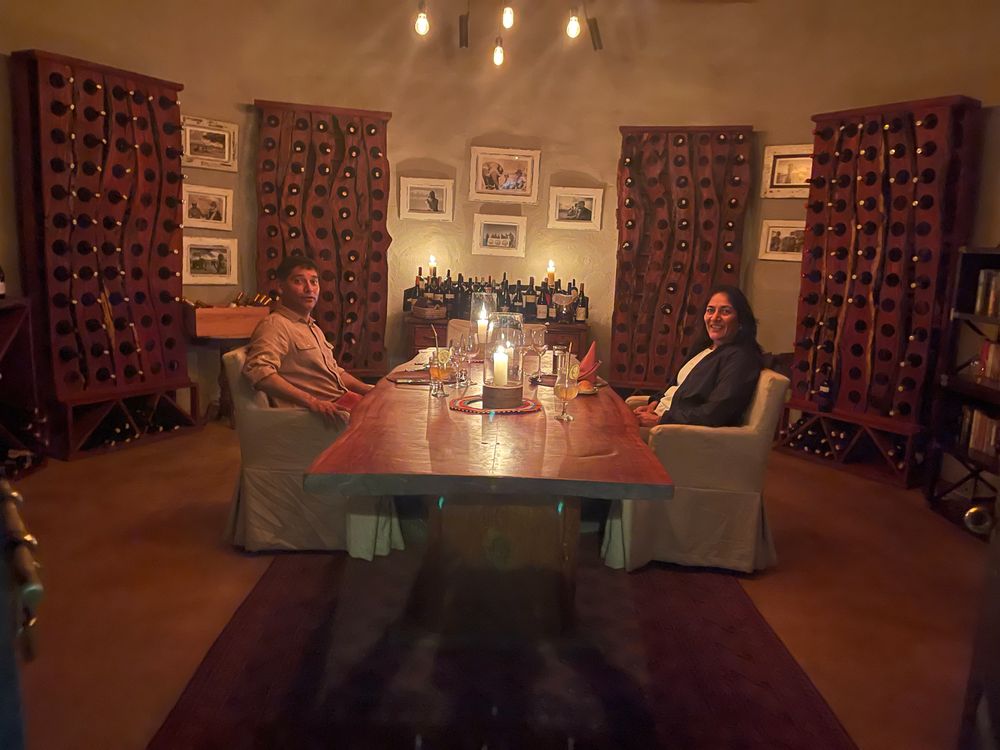
As expected from a high-end GP lodge, the suites are exceptionally well-designed, featuring a spacious layout with a private plunge pool and an outdoor shower. A unique feature of the lodge is the “star bed,” located above each suite and accessed by a staircase near the outdoor shower. This allows for a memorable night under the African stars, adding another layer of magic to the experience.
The lodge offers a variety of activities, including horseback riding, bush walks, and, of course, spending time at the hides for close-up animal viewing. For those unfamiliar with them, a hide is a structure built into the ground, offering an elevated, eye-level view of the wildlife at watering holes, giving you a unique and intimate perspective of the animals.
The staff was engaging and attentive, making us feel truly taken care of. The food could have been better, but we commend the chef for going above and beyond to accommodate our preferences and satisfy our requests. This effort really reflects the essence of GP—an operator that truly goes all out for its guests.
What stood out most during our visit was the exclusivity of our experience. We had private, uninterrupted views of all the sightings and activities, allowing us to linger and enjoy each moment for as long as we wanted. It was a rare privilege to spend as much time as we pleased with the wildlife and surroundings, which made the experience all the more special.
A few pictures posted from our time at Ol Donyo, starting with the “Big Tuskers”. Due to poaching, sightings of these magnificent elephants are much rarer than they used to be. Most of the surviving Big Tuskers are now found within the broader Amboseli area. These elephants are known for their massive tusks, many of which reach the ground, with each tusk often weighing over 50kg!
During our stay, we were fortunate enough to come across two such Big Tuskers, along with several other elephants that were growing into the iconic, large-tusked giants. The photos below were taken from the hides, which provided some of the best shots of the Big Tuskers up close.
We spent a significant amount of time at the hides, as the animals would frequently come in to drink from the watering hole and take shelter from the harsh heat. Given the ongoing drought, this watering hole, maintained by the lodge, became one of the few reliable sources of water in the region, resulting in large congregations of animals. Sometimes, this would lead to heated encounters or even tussles as different species jostled for position at the water’s edge. The hides offered an ideal vantage point to observe this natural drama unfold, giving us an incredible opportunity to capture the wildlife up close in their most authentic moments.
Next on our list were the Gerenuks, a fascinating type of antelope known for their long necks. This unique feature allows them to stand on their hind legs, reaching up to feed on the leaves and branches of acacia bushes, which other herbivores can’t access. Gerenuks are relatively uncommon outside of the Amboseli region, making them a special sighting in this area. Their elegant, upright feeding stance is quite striking and provides an intriguing glimpse into how they’ve adapted to thrive in their environment.
Seeing lions on a tree is no easy feat, and it’s a behavior most commonly associated with places like Lake Manyara in Tanzania. So, when our guide spotted signs of lions on our last day, we were excited—but also prepared for a bit of a search. We spent around 30-45 minutes tracking their movements, and when we finally found them, it was an amazing sight.
There, on a tree branch, were two lion cubs relaxing with their mother on the ground below. The cubs, clearly not the most comfortable in their tree perch, made several clumsy attempts to get off the branch. At times, the scene became downright comical, as they contorted their bodies, trying to find a better position. Their awkward attempts to settle in were both endearing and humorous, offering us a rare and entertaining glimpse into the lighter side of lion behavior. It was a perfect way to end our time at Ol Donyo, with this unexpected, playful moment in the wild.
One memorable experience was the morning we were scheduled for a bush walk. The plan was to head south, just beyond the watering hole. But just before we set out, one of the staff spotted a lion pride in the direction we were heading! We drove over to observe them and saw the pride strolling by before settling down for a morning nap. As a result, our walk route was quickly altered, and we ended up heading in the opposite direction. We ventured nearly two miles out onto the open plains, where the lodge had set up a delightful surprise breakfast for us!
Finally, the breathtaking views of Mount Kilimanjaro and stunning sundowners are not to be missed!
- ol-donyo-lodge-game-sighting-1
- ol-donyo-lodge-game-sighting-2
- ol-donyo-lodge-game-sighting-3
- ol-donyo-lodge-game-sighting-4
- ol-donyo-lodge-game-sighting-5
- ol-donyo-lodge-game-sighting-6
- ol-donyo-lodge-game-sighting-7
- ol-donyo-lodge-game-sighting-8
- ol-donyo-lodge-game-sighting-9
- ol-donyo-lodge-game-sighting-10
- ol-donyo-lodge-game-sighting-11
- ol-donyo-lodge-game-sighting-12
- ol-donyo-lodge-game-sighting-13
- ol-donyo-lodge-game-sighting-14
- ol-donyo-lodge-game-sighting-15
- ol-donyo-lodge-game-sighting-16
- ol-donyo-lodge-game-sighting-17
- ol-donyo-lodge-game-sighting-18
- ol-donyo-lodge-game-sighting-19
Mara Plains Camp
Originally, we were only scheduled to stay at Mara Plains. But with Mara Nyika having recently opened and being just “next door,” we thought, why not? And so, it happened.
The big question for us was whether we could top the incredible experiences we’d had so far on this trip. Only time would tell. There’s no direct flight from Chyulu Hills to the Olare Motorogi Conservancy, where Mara Plains Camp is located, so we flew into Wilson Airport first, then made a brief stopover before connecting to a flight that brought us to the conservancy airstrip around 11am. Mara Plains is situated on the southern edge of the conservancy, right along the border of the reserve, next to a tributary of the famous Mara River.
One of the camp’s unique features is the footbridge. Upon arrival, you’re greeted by the camp staff and escorted across the bridge to the main lounge area. The camp’s seven luxurious suites are evenly spread on either side of the bridge. Ours was on the right, and we reached it after a short walk along a raised walkway—this is necessary as hippos often inhabit the tributary and come out to graze.
Unfortunately, due to the ongoing drought during our visit, the water level was quite low and stagnant, which caused a rather unpleasant odor throughout the camp. However, with the rains having returned since our stay, we hope the water has started flowing again.
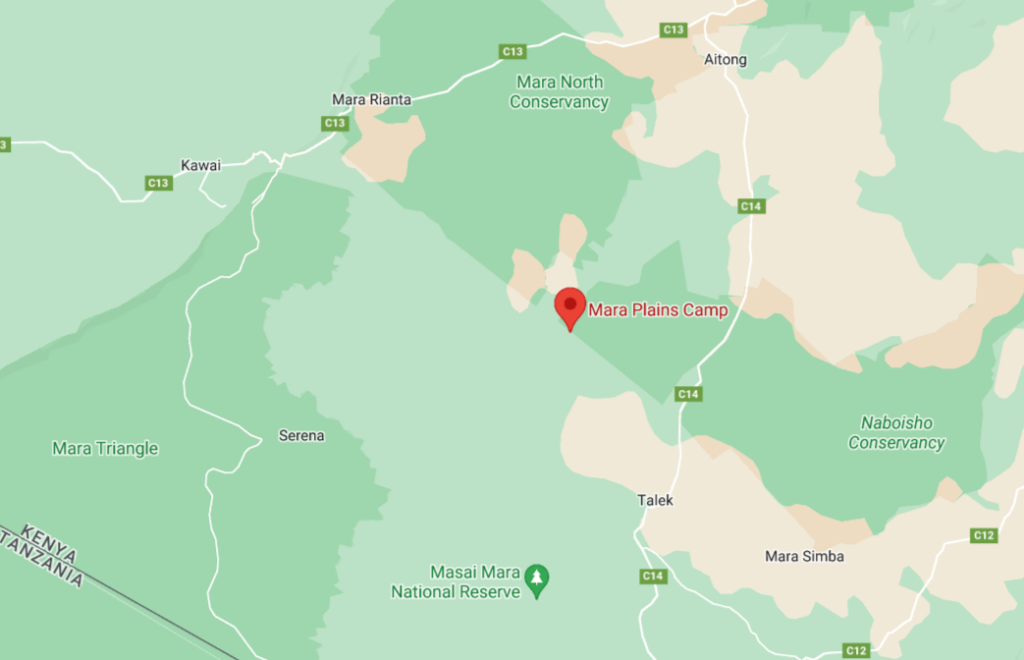
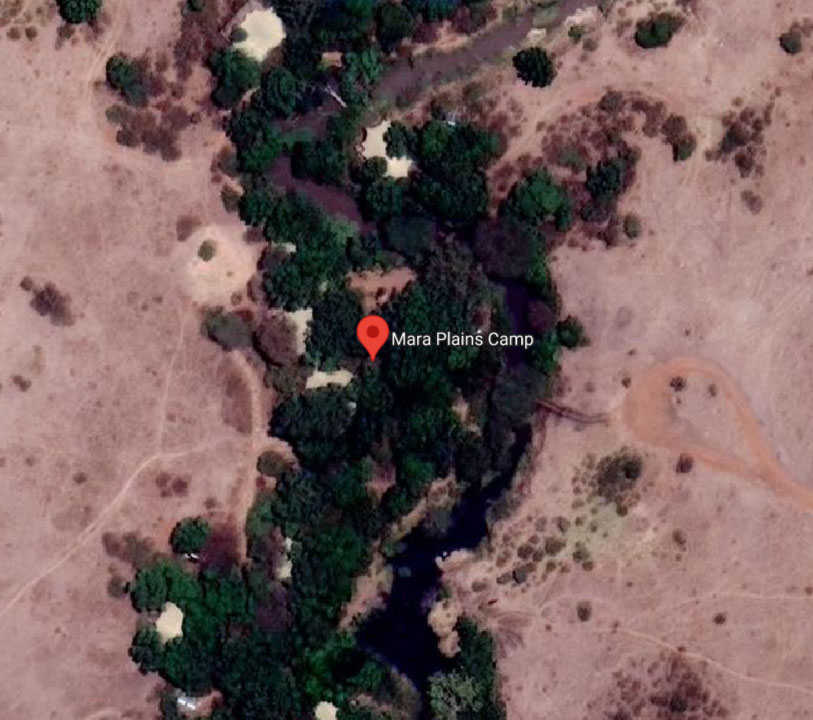
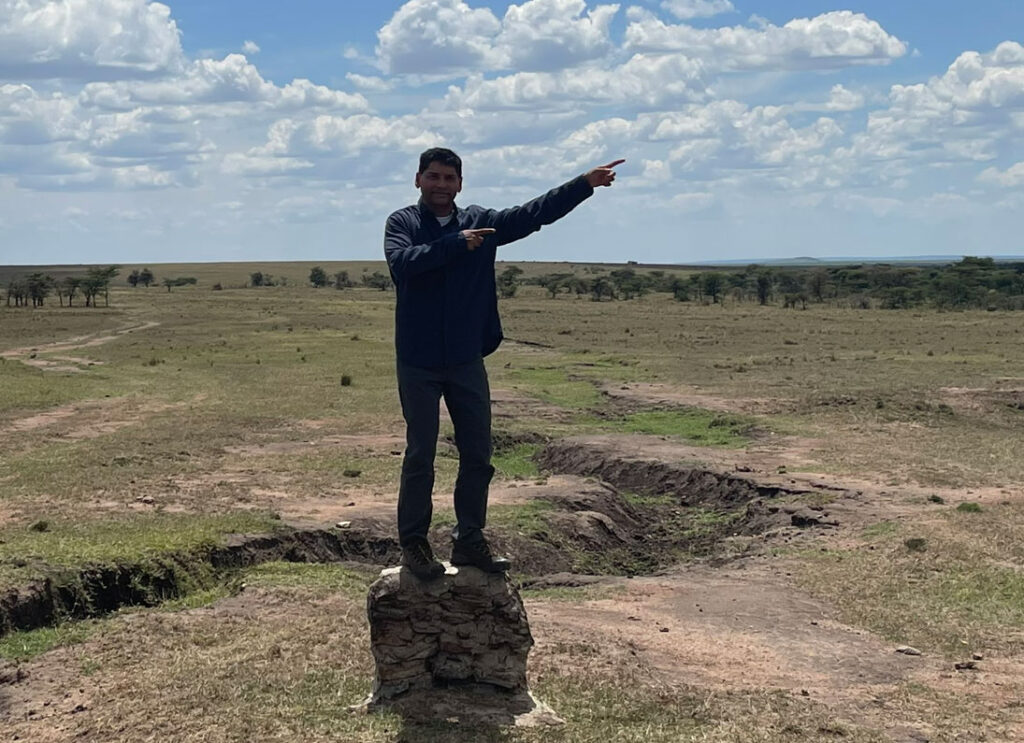
The camp layout at Mara Plains is superb, with the main lounge offering sweeping views over the conservancy. The suites are designed as luxurious tents, reflecting Great Plains’ signature style—dark wooden flooring, rich red carpets, and the distinctive copper bathtub. It’s a beautifully thought-out blend of comfort and elegance.
It’s also worth mentioning that Great Plains operates several other camps nearby, including Mara Expedition (which we had the chance to visit) and Mara Toto, to name just a few. Each camp has its own unique charm, but all are characterized by the same exceptional standards of service and design.
While we feel that our game drive experience could have been more rewarding in terms of predator sightings, we still thoroughly enjoyed our time at Mara Plains. One of the standout features of the camp is its exclusive traversing rights in the Mara North Conservancy, which added an extra layer of adventure to our stay. We had the opportunity to explore this area as well, enhancing our overall experience.
Our first day kicked off early with a hot air balloon ride over the Mara, offering stunning aerial views as we drifted towards the southern end. It was a magical way to begin our time in the area and set the tone for the rest of our adventure.
The balloon safari typically ends with a celebratory champagne breakfast, but we chose something a bit more private. Instead, we enjoyed a secluded breakfast by the river bend, with our guide by our side. It was the perfect spot to relax and take in the view of a nearby pod of hippos, adding a truly special touch to the experience.
One particularly memorable experience occurred one afternoon when we observed a young giraffe with its mother. The very next day, we learned that the young giraffe had become the prey of the lion pride in the area. The circle of life in the wild can feel heartbreaking at times, but it’s a reminder that one animal’s loss sustains another predator’s survival.
- mara-plains-camp-game-sighting-1
- mara-plains-camp-game-sighting-2
- mara-plains-camp-game-sighting-3
- mara-plains-camp-game-sighting-4
- mara-plains-camp-game-sighting-5
- mara-plains-camp-game-sighting-6
- mara-plains-camp-game-sighting-7
- mara-plains-camp-game-sighting-8
- mara-plains-camp-game-sighting-9
- mara-plains-camp-game-sighting-10
- mara-plains-camp-game-sighting-11
Overall, Mara Plains is a wonderful camp to visit. The staff is incredibly caring and thoughtful, and the meals are delicious. While the foul odor from the low, stagnant water was a bit off-putting, we understand that this was due to the ongoing drought. We recommend visiting Mara Plains, and also exploring their sister camps in the area, for a truly exceptional safari experience. Just be sure to request a top-tier guide to fully enhance your game drives.
Mara Nyika Camp
On our way to our third Great Plains camp, little did we know that this would turn out to be the highlight of our trip, ending on an unforgettable high note.
The transfer to Mara Nyika was seamless. It’s located in the neighboring Naboisho Conservancy, so our guide simply drove over to Mara Plains to pick us up, and off we went. As we were leaving the Olare Motorogi Conservancy, our guide mentioned he had spotted cheetahs on the hunt and asked if we’d like to take a slight detour, which might delay our arrival at camp. Without hesitation, we said yes—after all, a cheetah sighting was too good to pass up! But, before we get ahead of ourselves, let’s take a step back and introduce Mara Nyika.
The camp is located about 45 minutes due east of Mara Plains, assuming you’re driving directly.
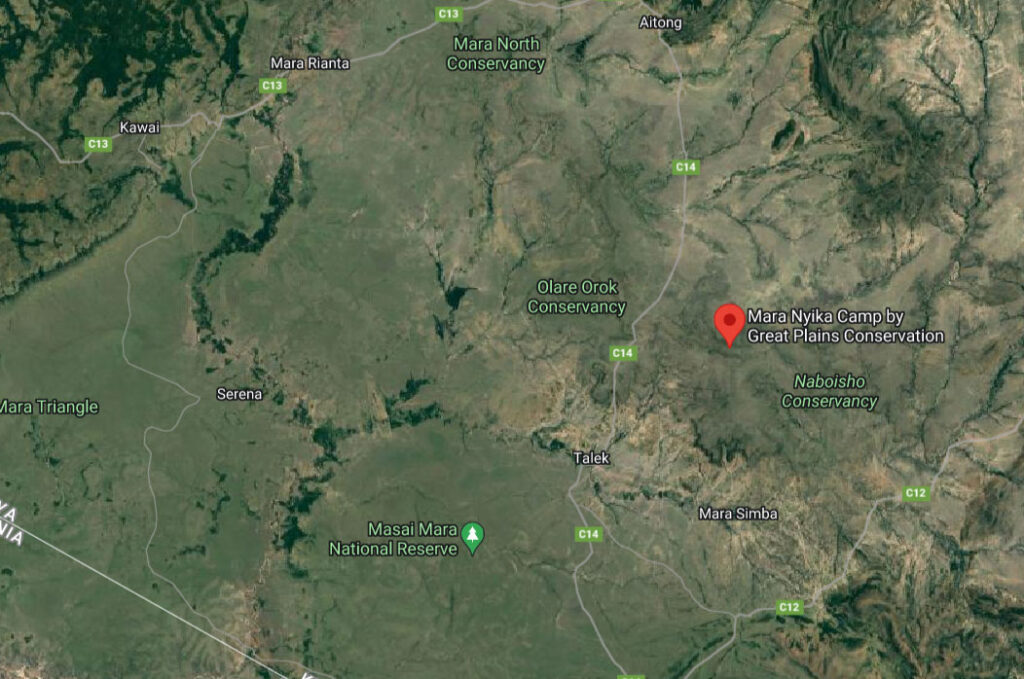
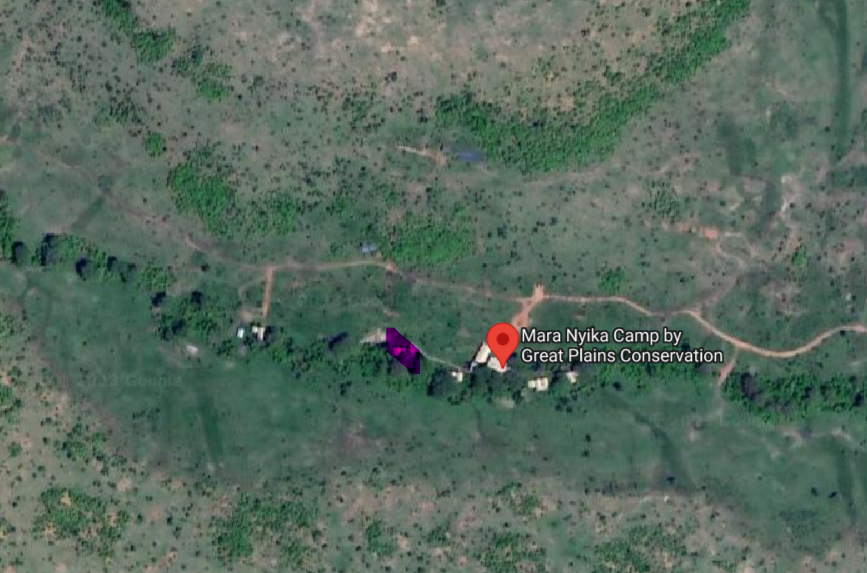

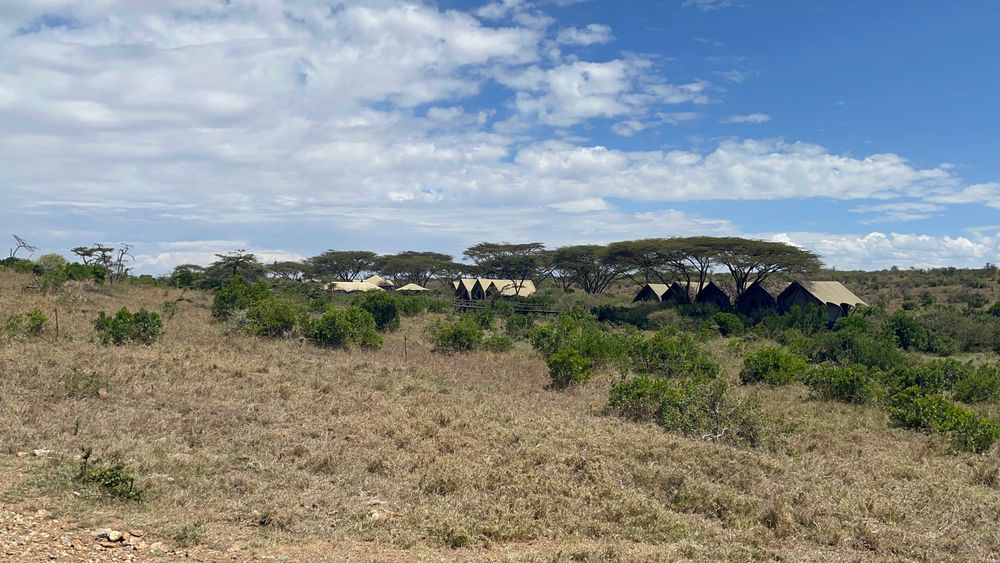
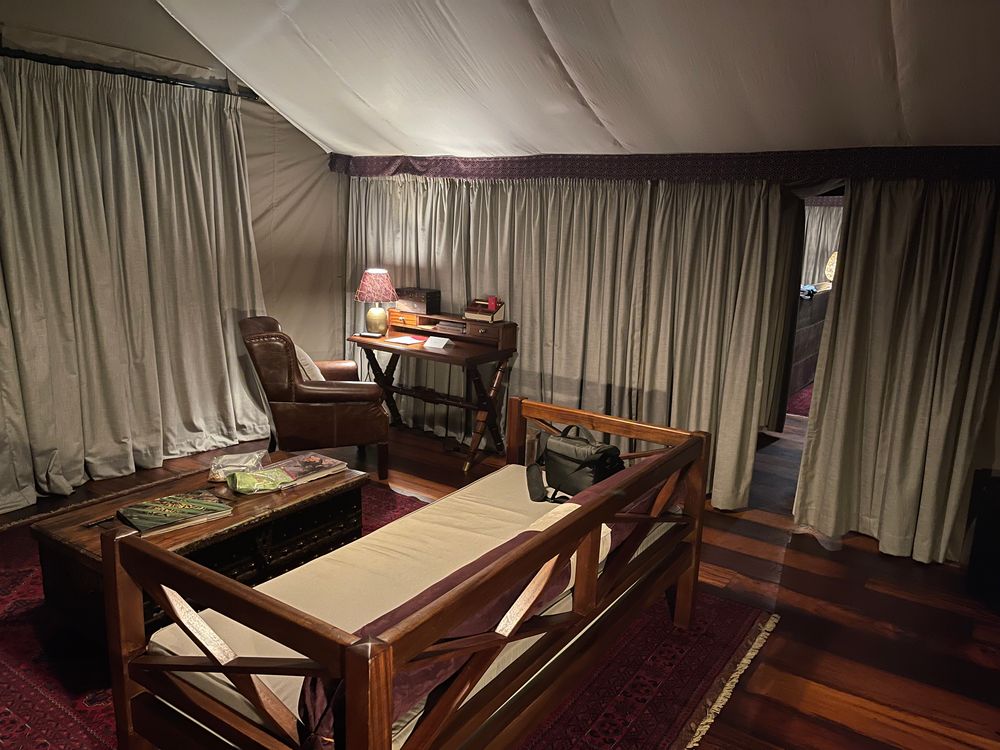
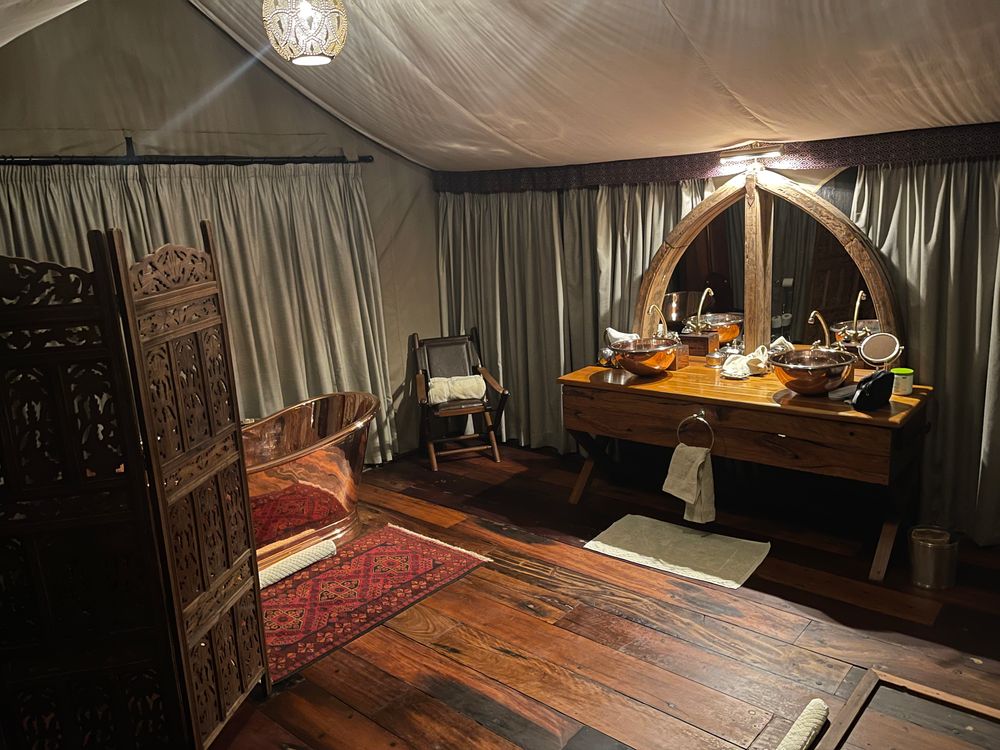
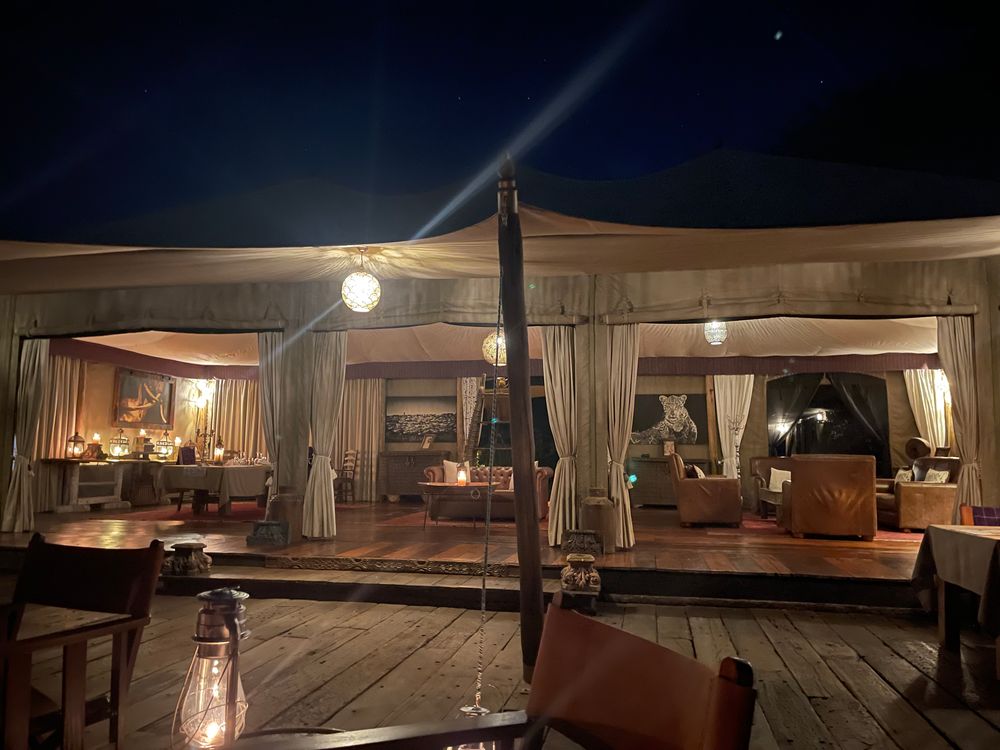
Mara Nyika is designed to be an intimate and exclusive retreat, with just five luxurious suites that seamlessly blend into the surrounding Acacia trees. The entrance, decor, and suite furnishings reflect the high standards of Great Plains, while the main lounge area has a familiar, welcoming vibe similar to that of Mara Plains. The staff and the guiding are exceptional, and the food is outstanding. While we could go on and on about all the wonderful aspects, we feel this sums up the experience perfectly: no faults whatsoever!
Now, to that cheetah sighting on our way to camp. We found the cheetah resting on the Reserve side of the border, accompanied by her two cubs. This, of course, meant that several vehicles began to line up in anticipation of a potential kill attempt. We waited for about an hour, watching as the scene unfolded before us.
A Thompson’s gazelle mother, unaware of the danger, was walking straight towards the cheetah, with her fawn trailing behind. We all watched in suspense, some of us silently hoping the gazelle would turn away. But it kept walking, briefly separating from its fawn as it ventured closer. As the gazelle approached within meters, the cheetah suddenly pounced, launching a short but intense chase due to the close proximity. Within moments, the gazelle became the cheetah’s lunch, with the cubs eagerly joining in to feast.
This was one of five kills—and several near misses—we witnessed during our three days at Mara Nyika. Naboisho, renowned for its incredible big cat sightings, gave us a rare and thrilling opportunity to observe the full predator sequence: the careful approach, the quick dash, the kill, and the cubs feeding hungrily. It was an unforgettable experience that truly highlighted the raw intensity of life in the wild.
Along with the numerous kills and near misses, we were also fortunate enough to witness the birth of an elephant calf—an absolutely stunning moment in the wild. These experiences, from the heart-pounding predator chases to the tender arrival of new life, made our time at Mara Nyika truly unforgettable!
On our last morning drive, we encountered the impressive lion pride that calls Naboisho home—more than 20 lions, led by two magnificent males. We spent about an hour observing them as they interacted, groomed each other, and played. It was a captivating experience, watching these powerful creatures in such a relaxed and social setting. A perfect way to end our time at Mara Nyika!
- mara-nyiki-camp-game-sighting-1
- mara-nyiki-camp-game-sighting-2
- mara-nyiki-camp-game-sighting-3
- mara-nyiki-camp-game-sighting-4
- mara-nyiki-camp-game-sighting-5
- mara-nyiki-camp-game-sighting-6
- mara-nyiki-camp-game-sighting-7
- mara-nyiki-camp-game-sighting-8
- mara-nyiki-camp-game-sighting-9
- mara-nyiki-camp-game-sighting-10
- mara-nyiki-camp-game-sighting-11
- mara-nyiki-camp-game-sighting-12
- mara-nyiki-camp-game-sighting-13
Mara Nyika is the cream of the crop of the Mara Conservancies. It’s absolutely worth a visit, particularly during the offseason, when you can take advantage of excellent specials and discounts, making this exceptional experience even more enticing!
